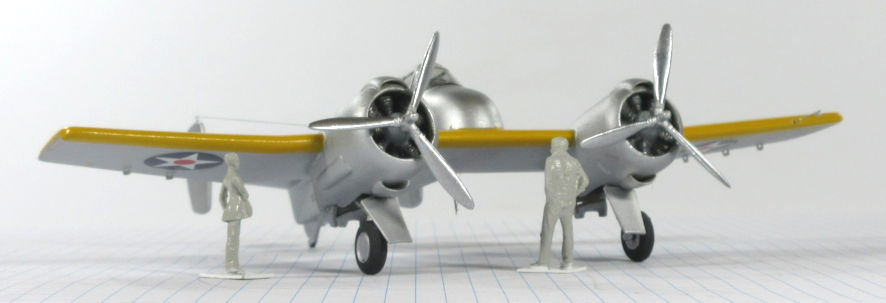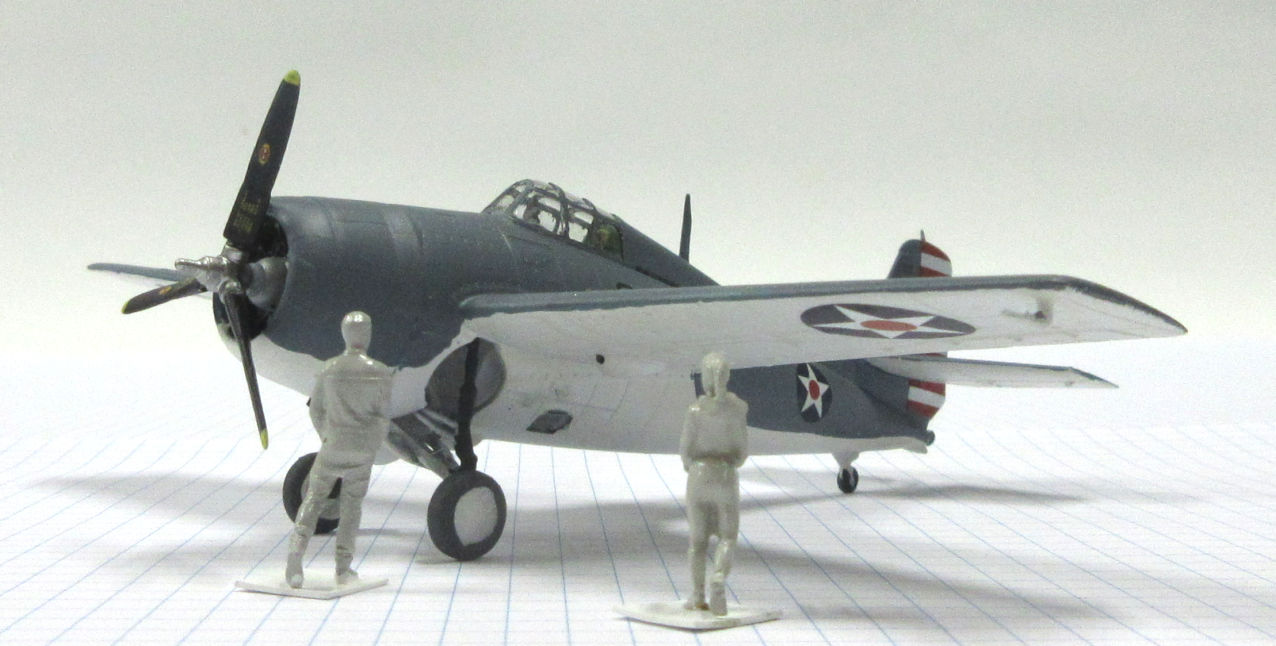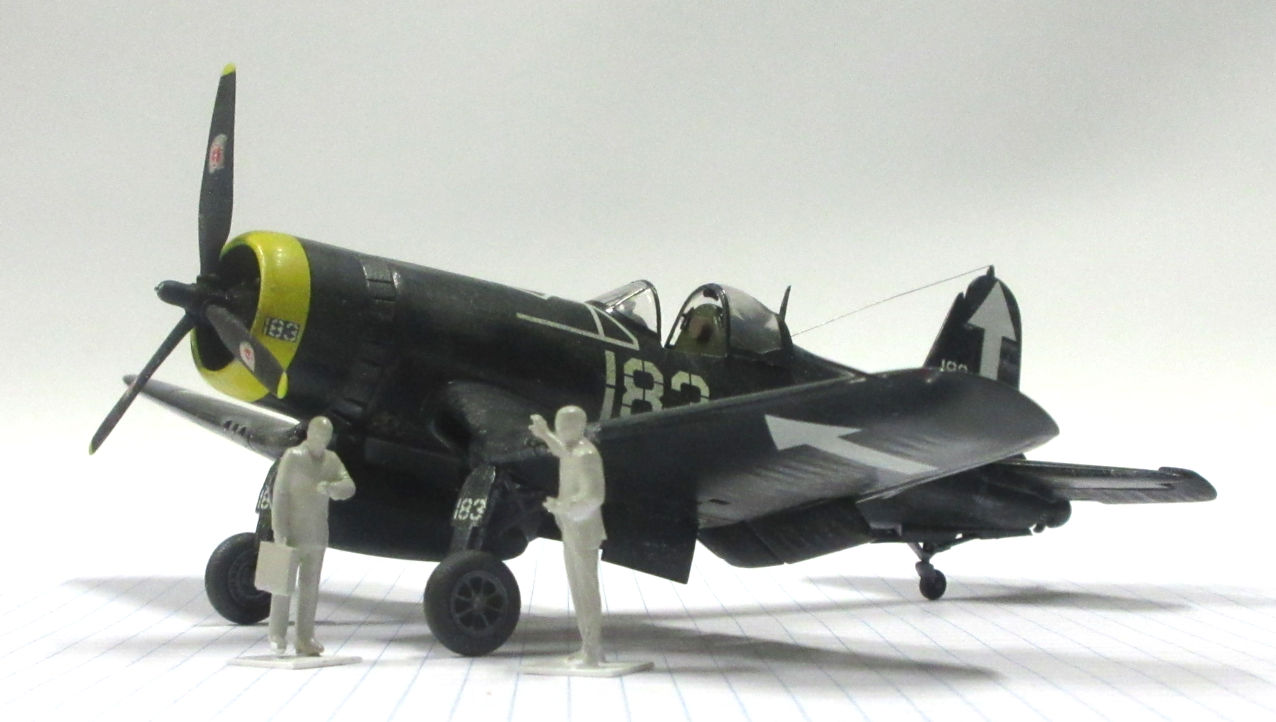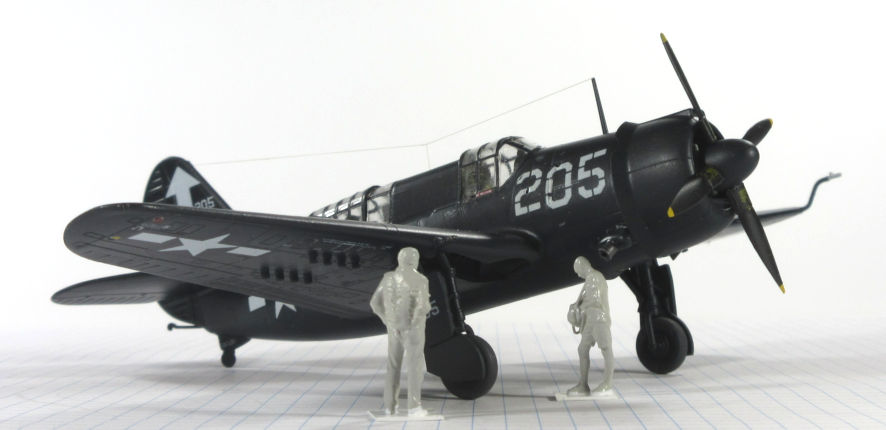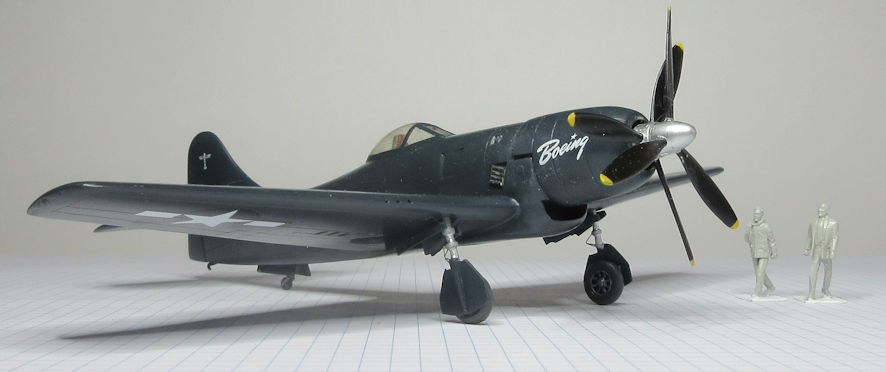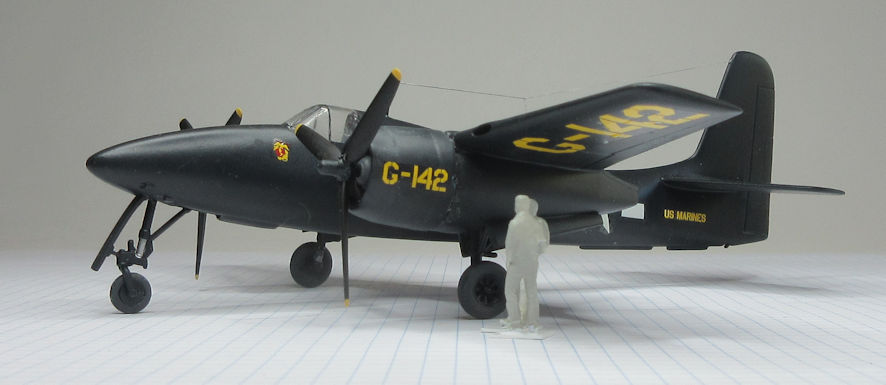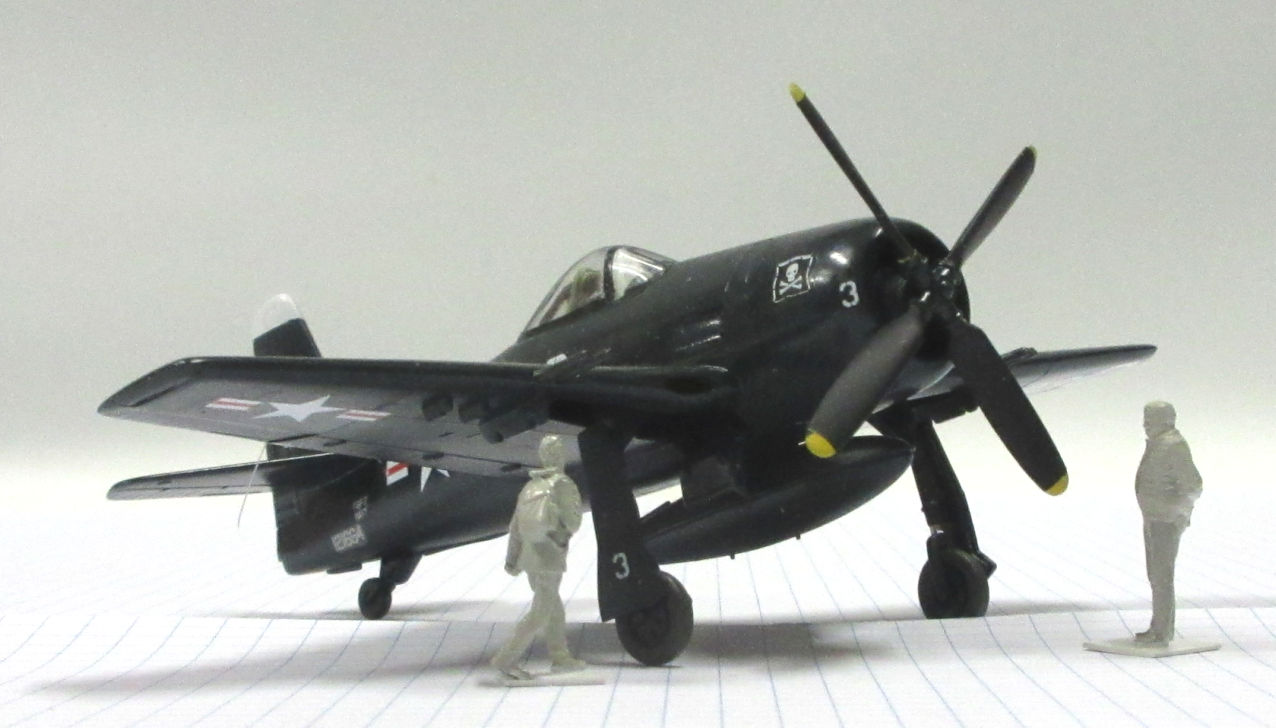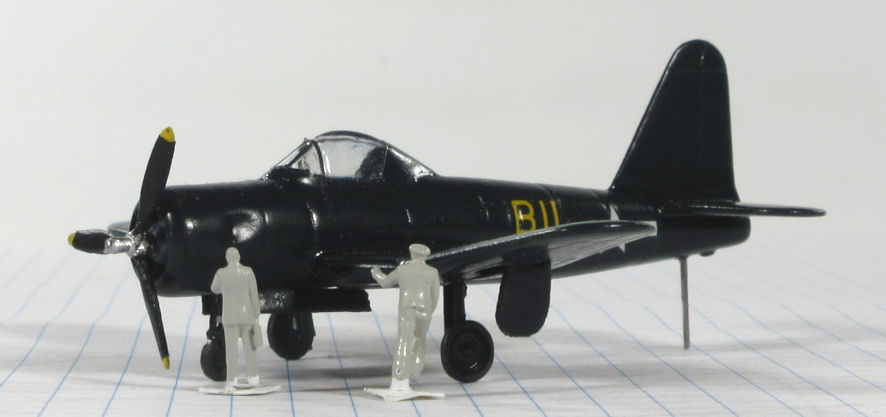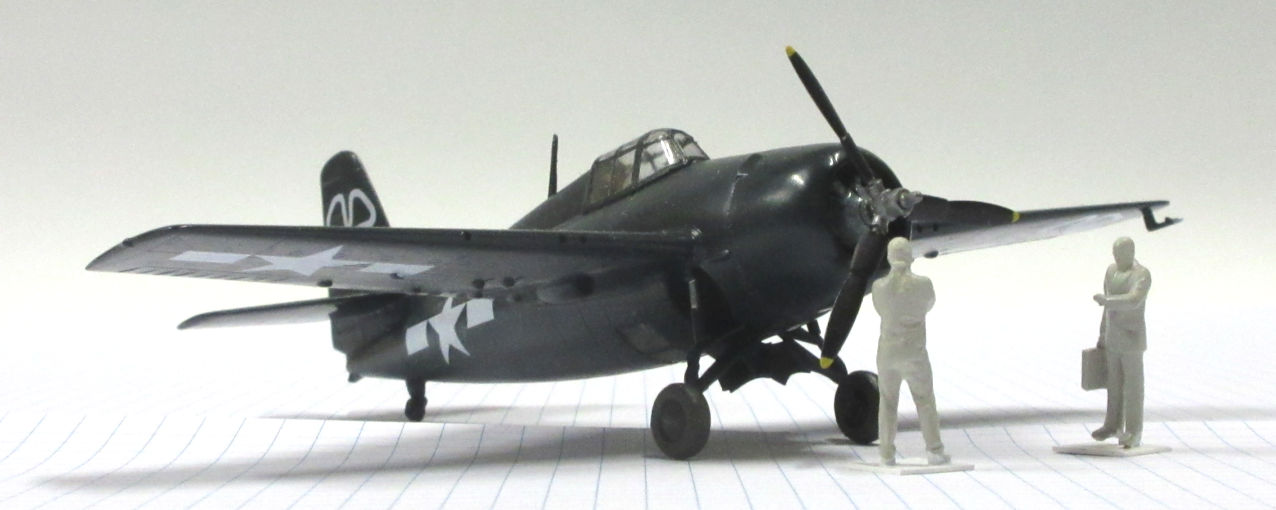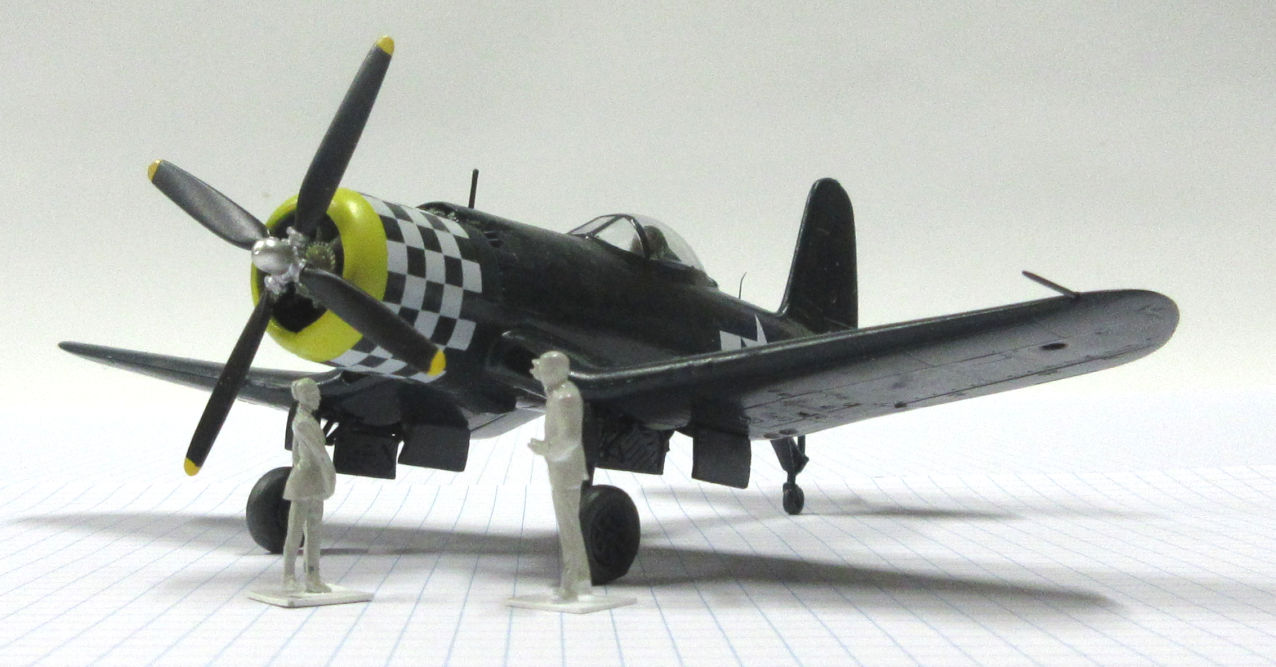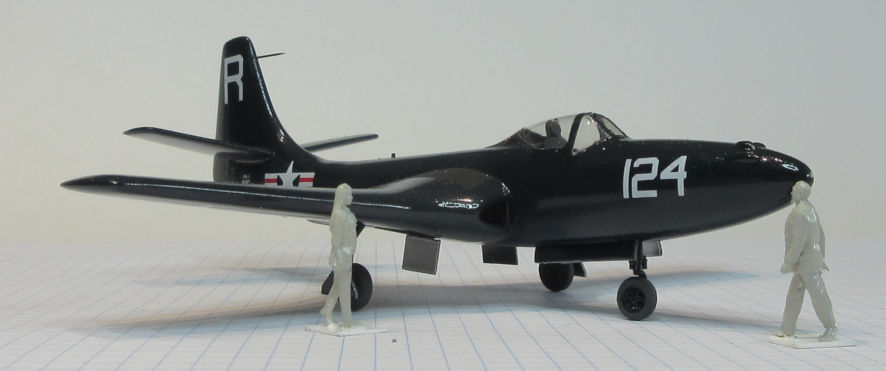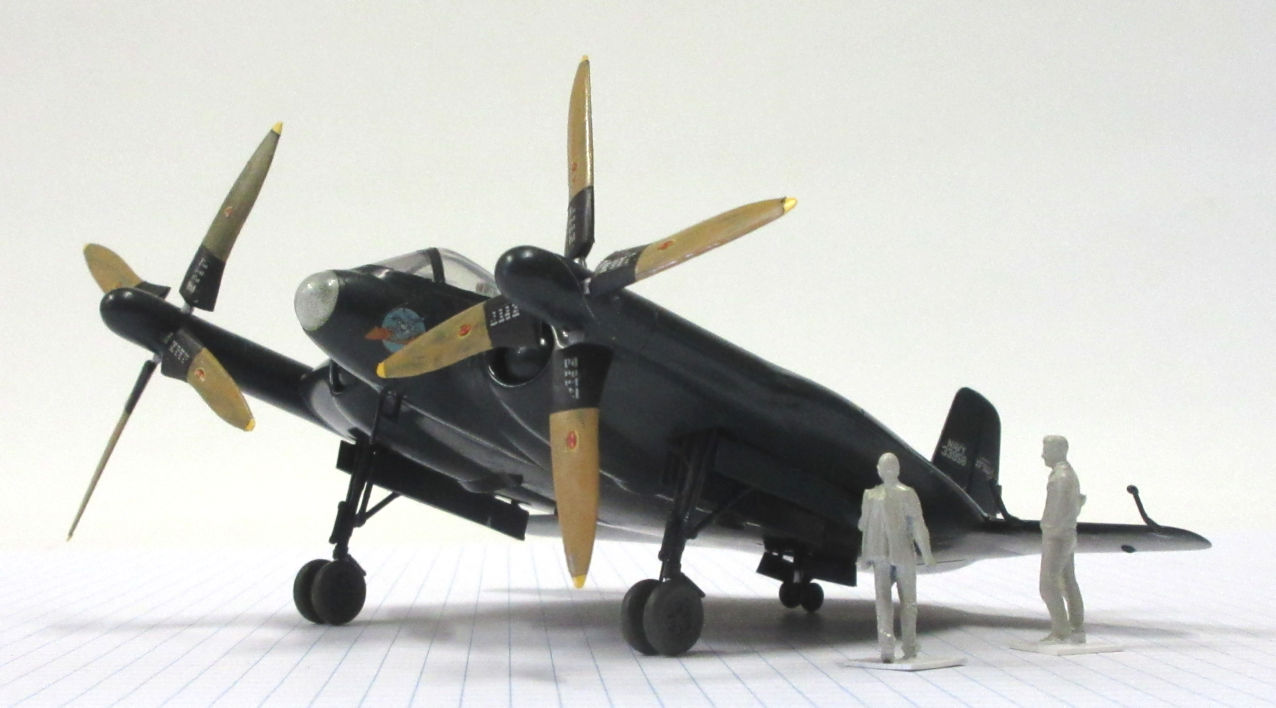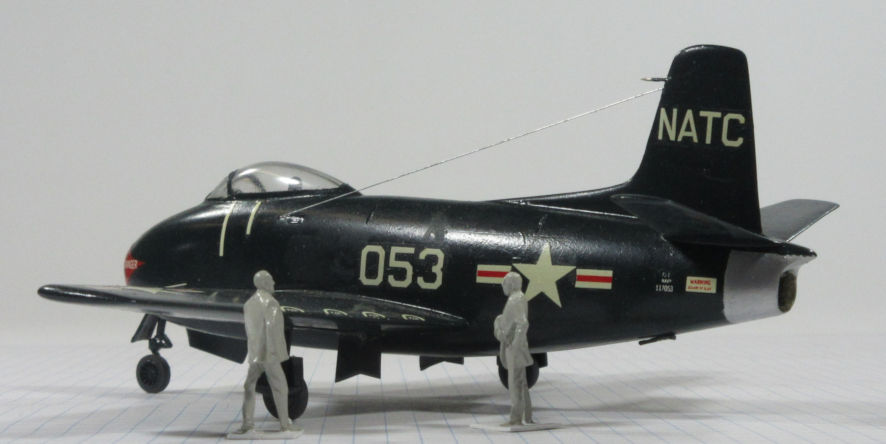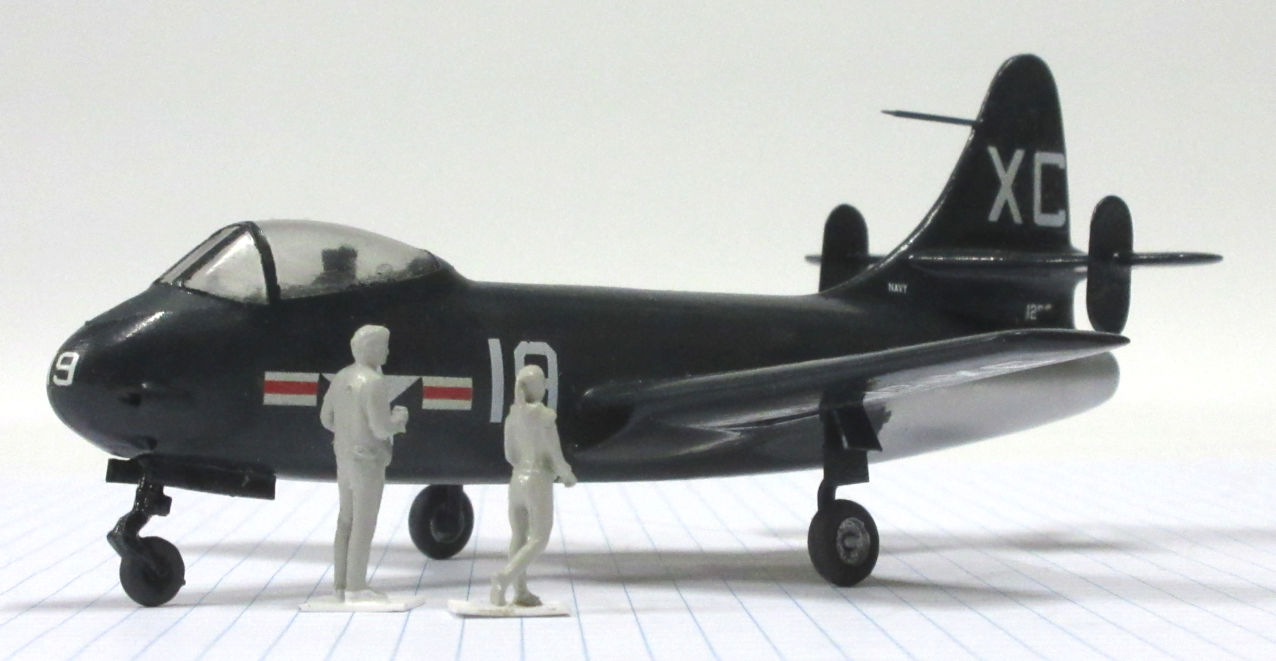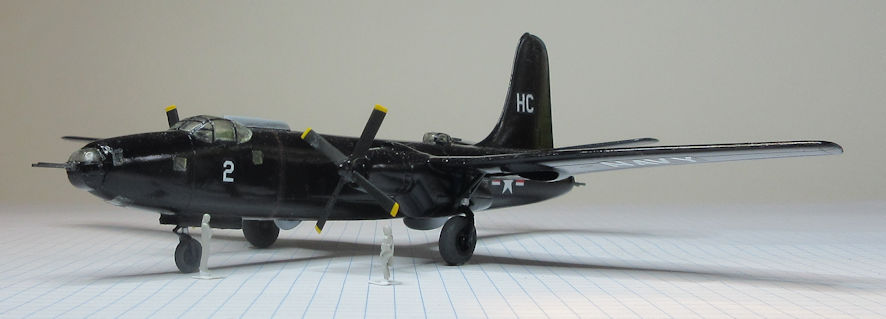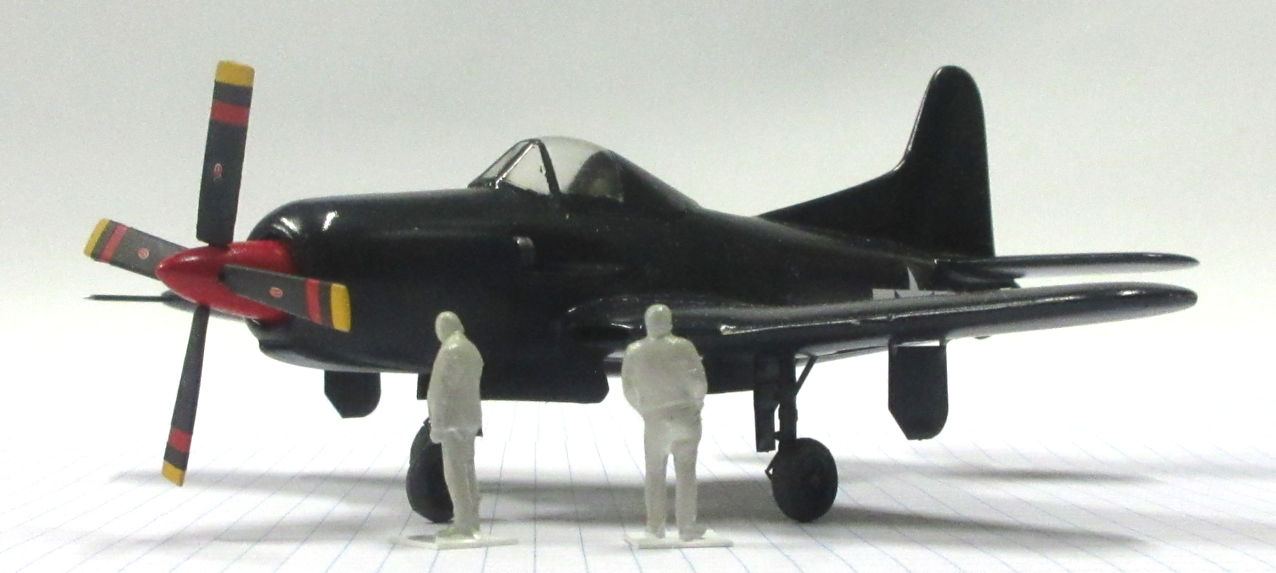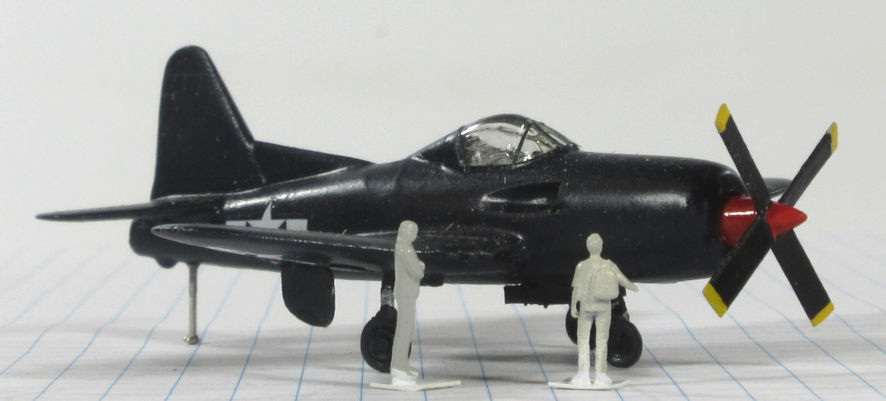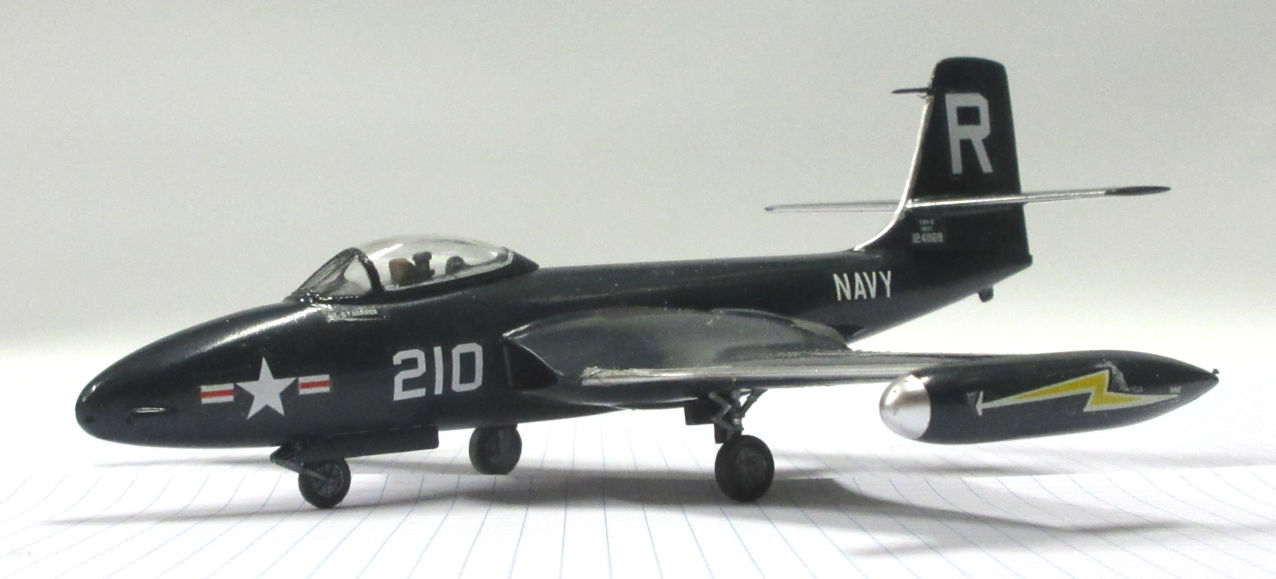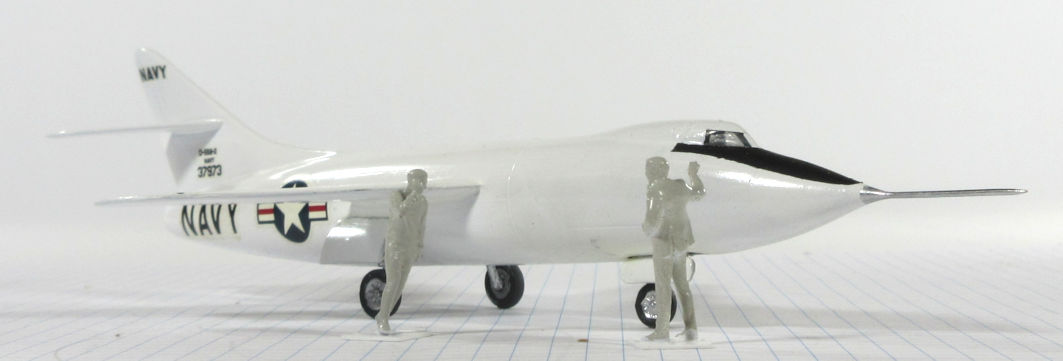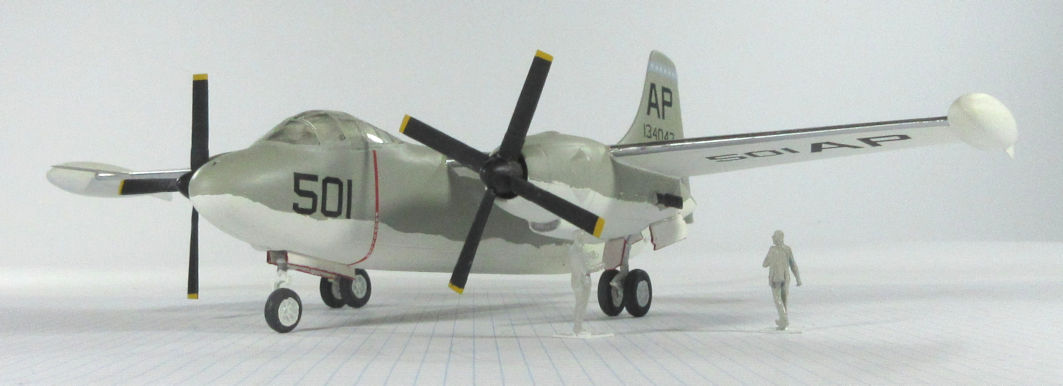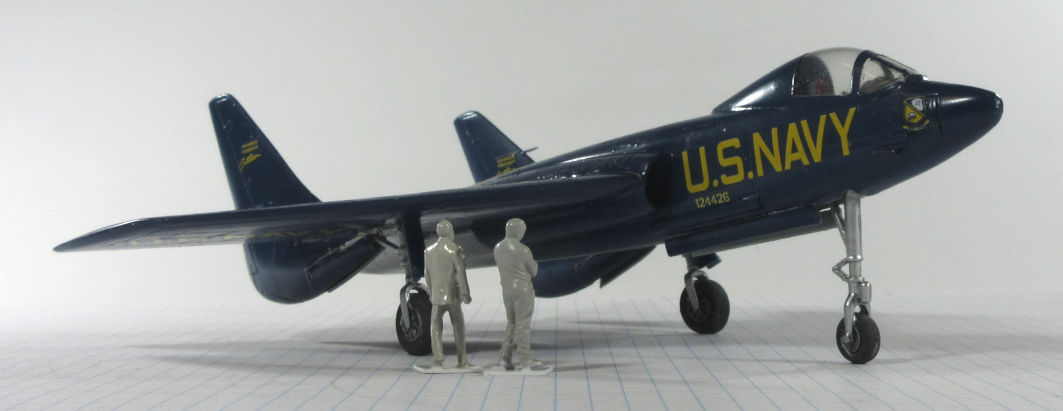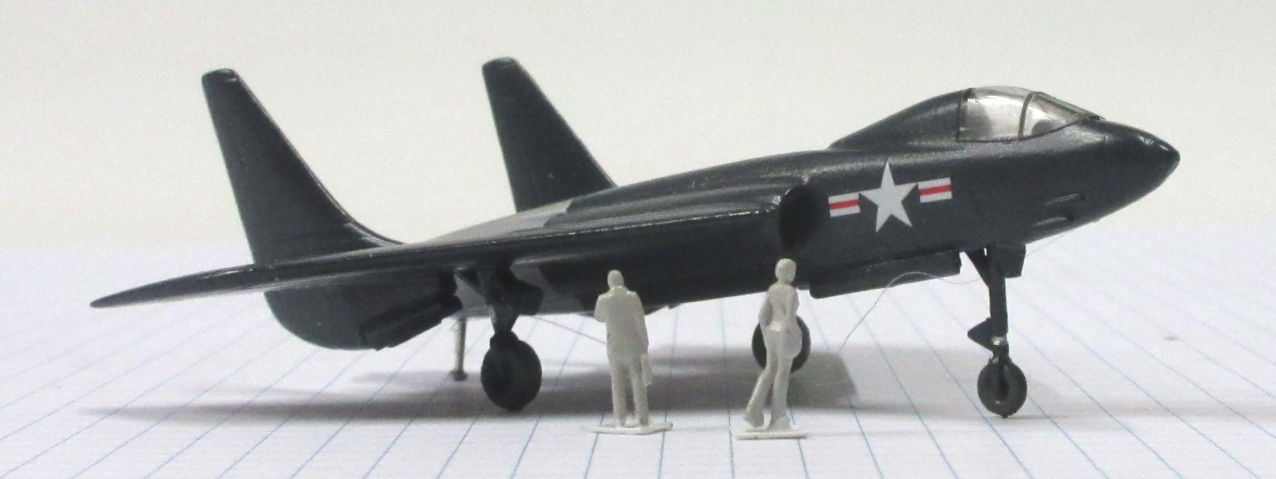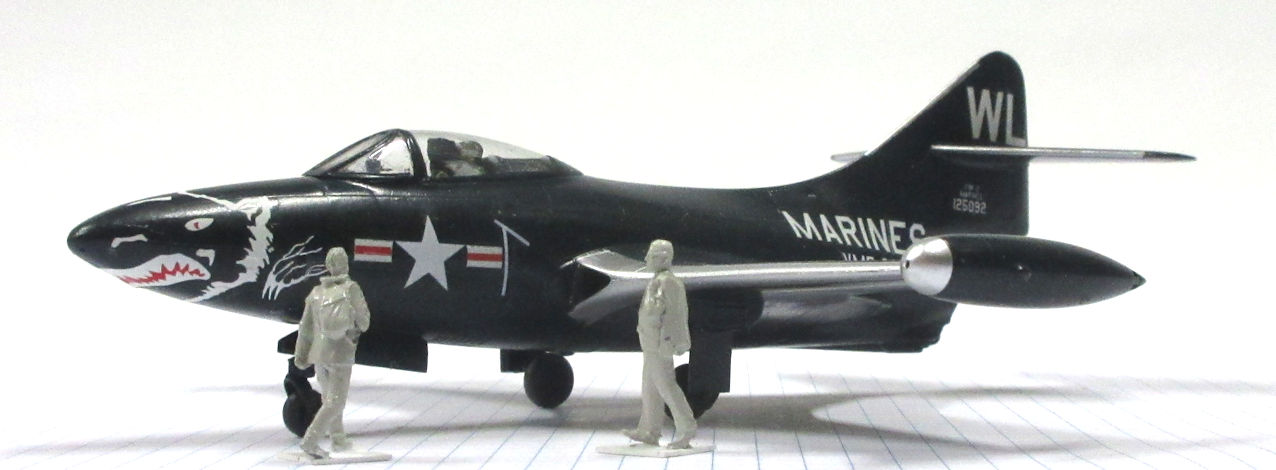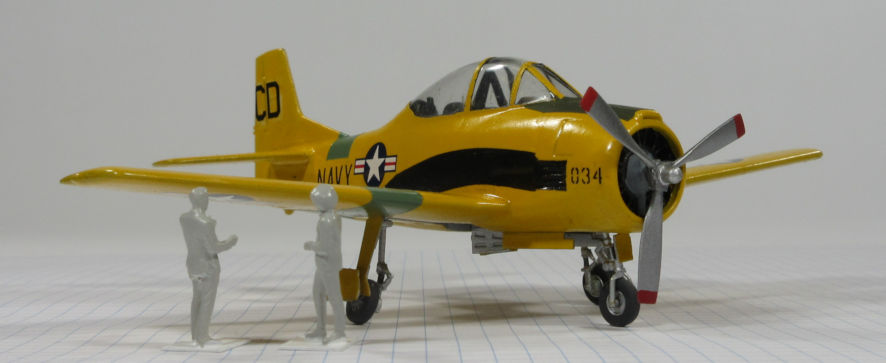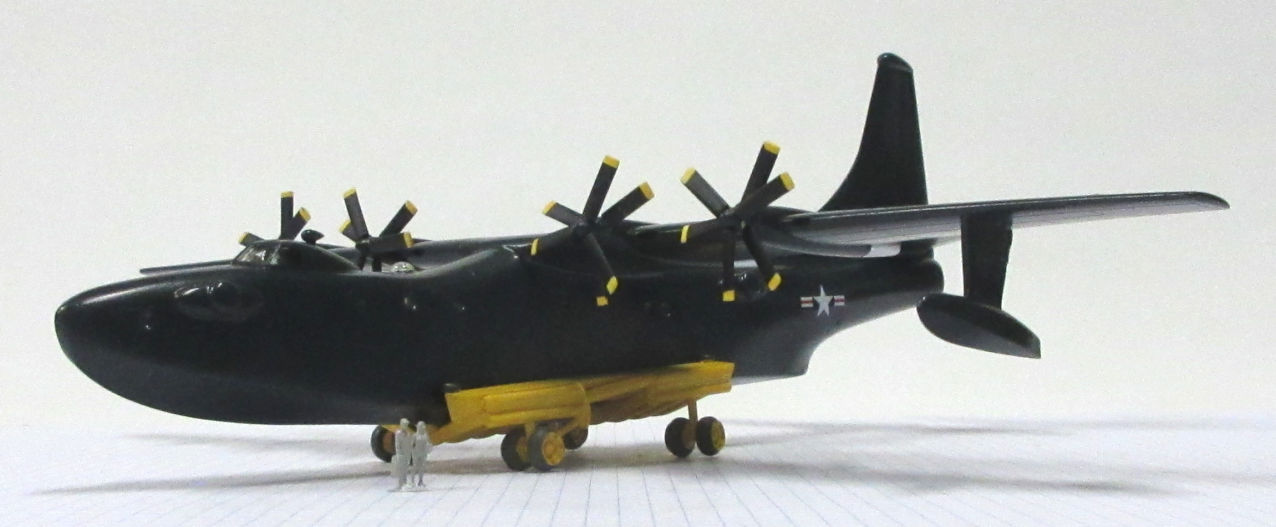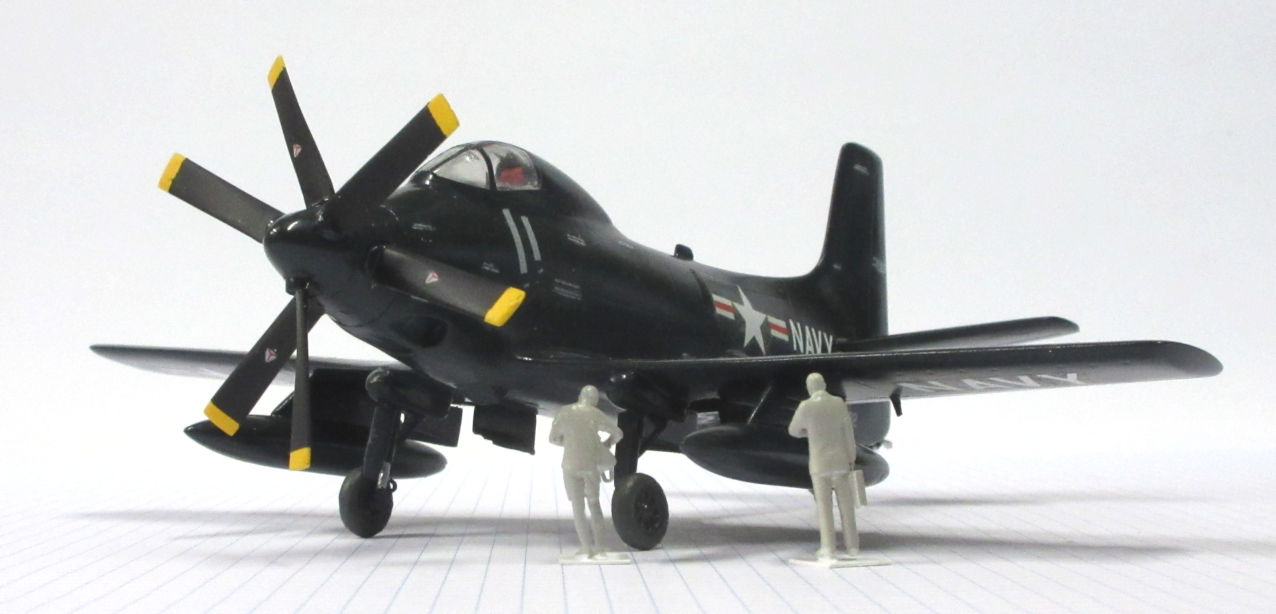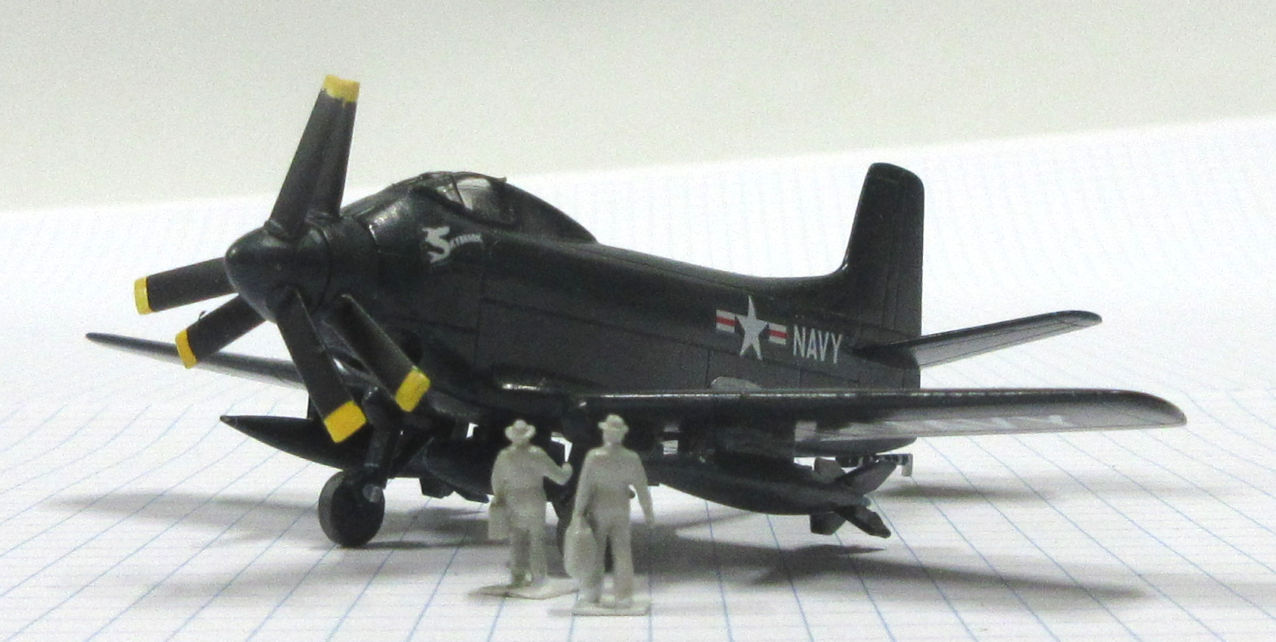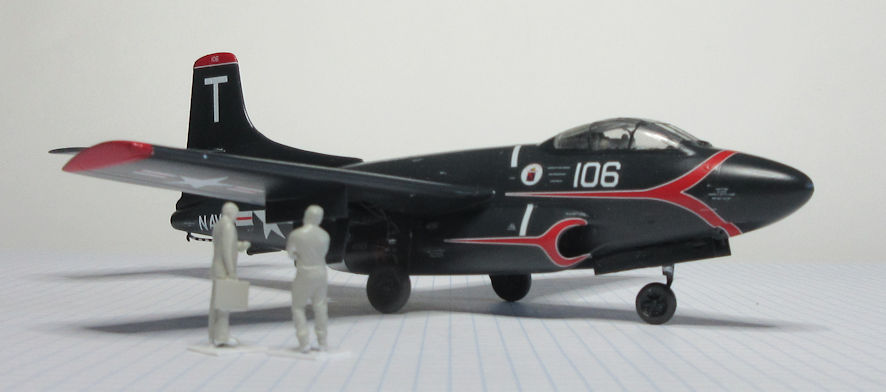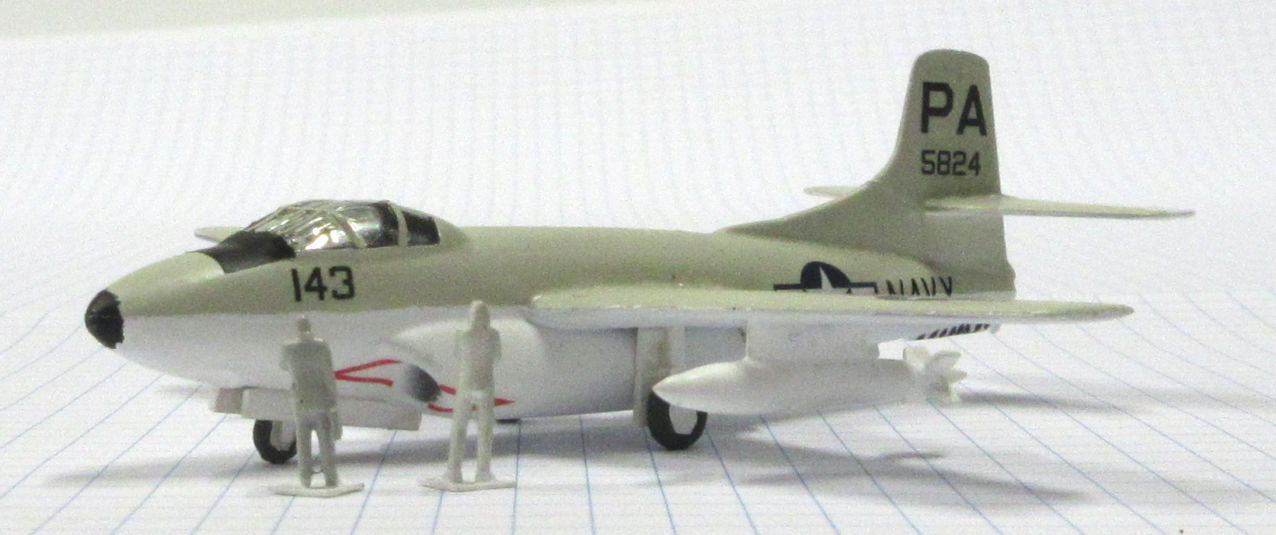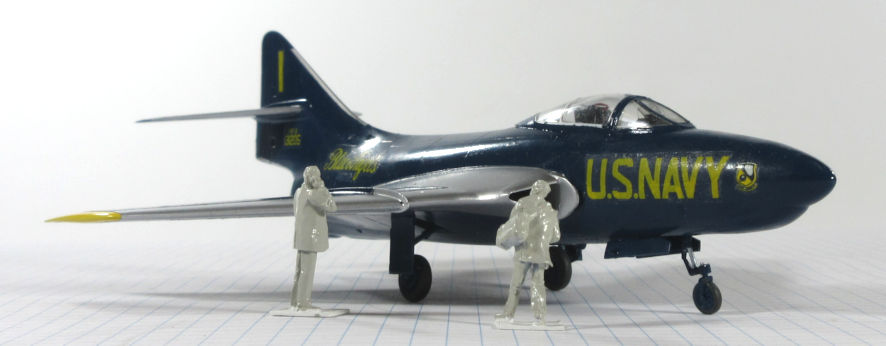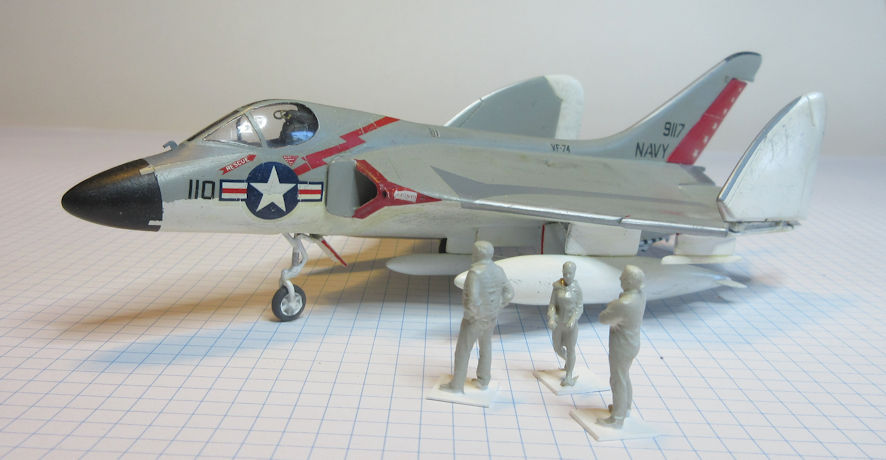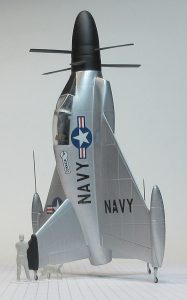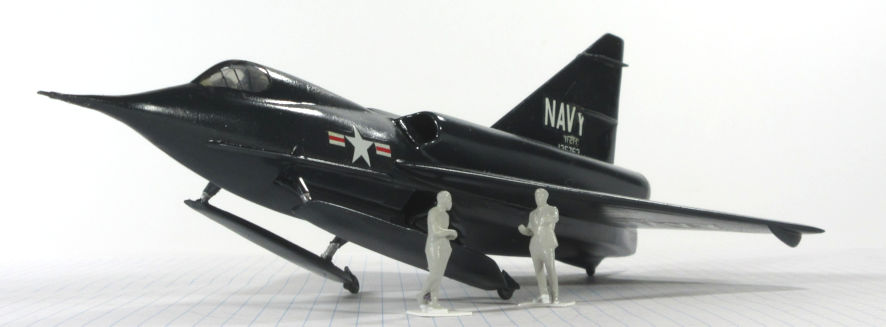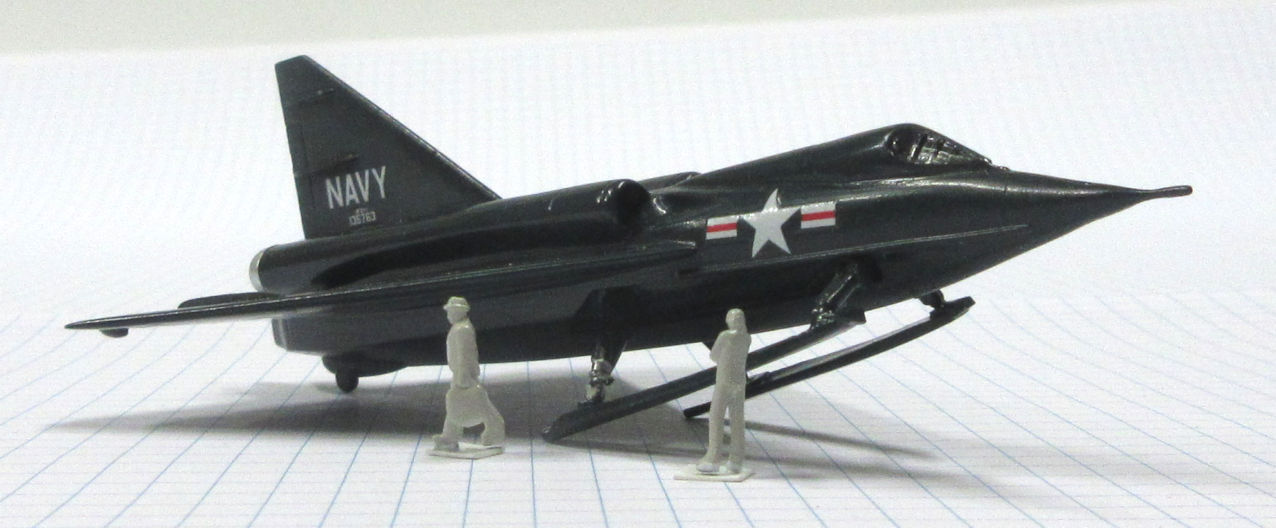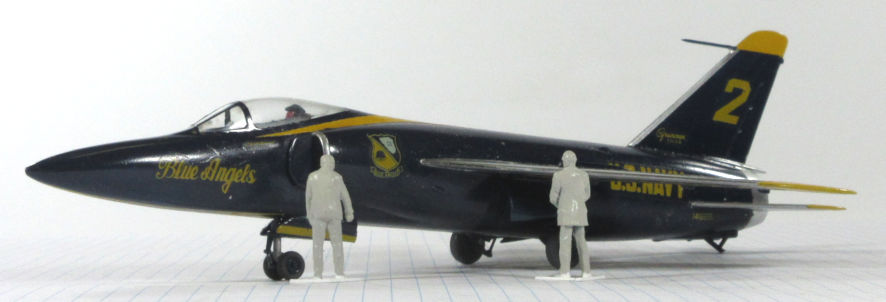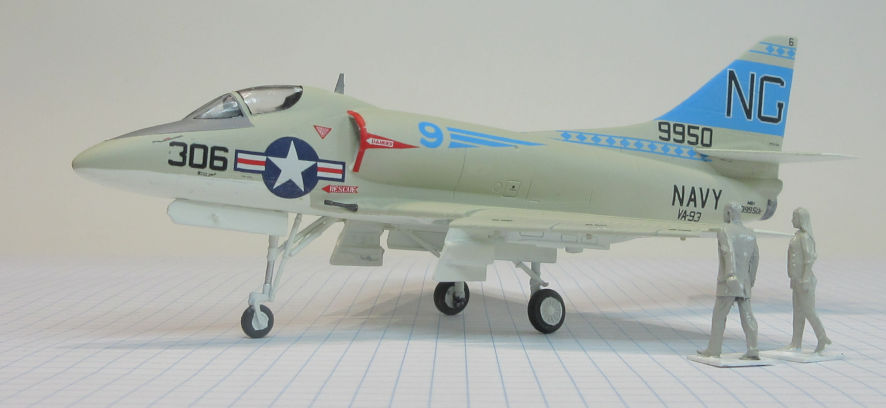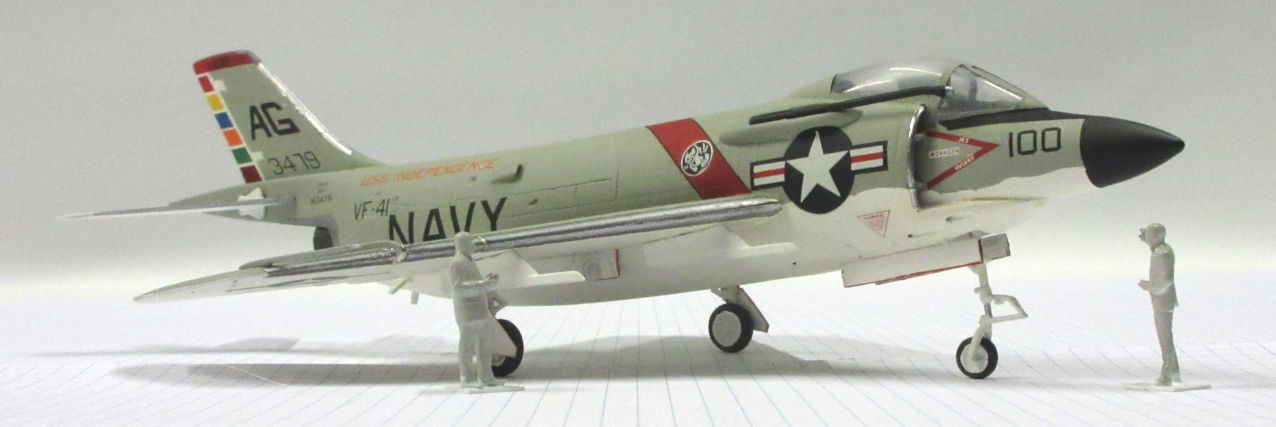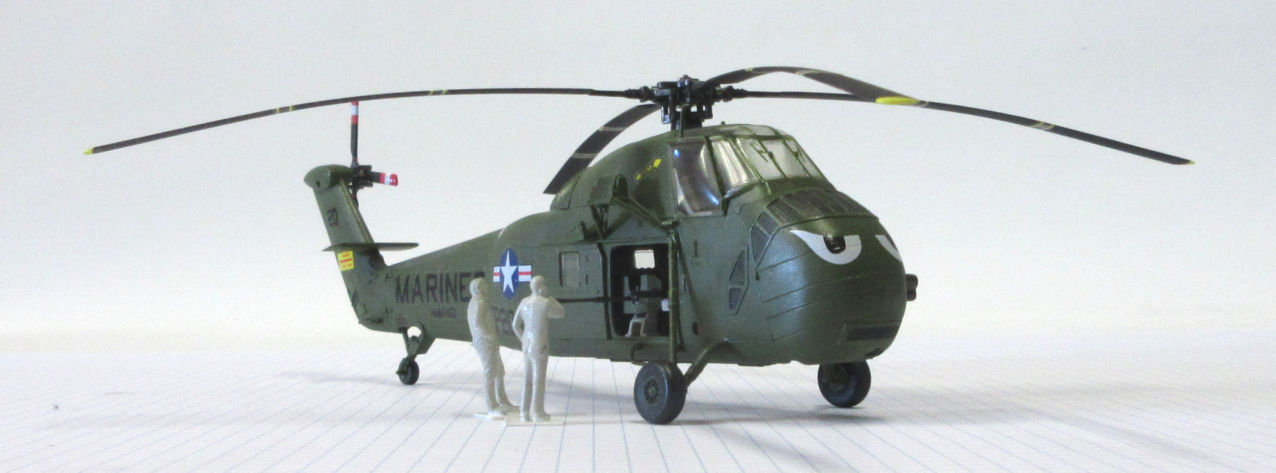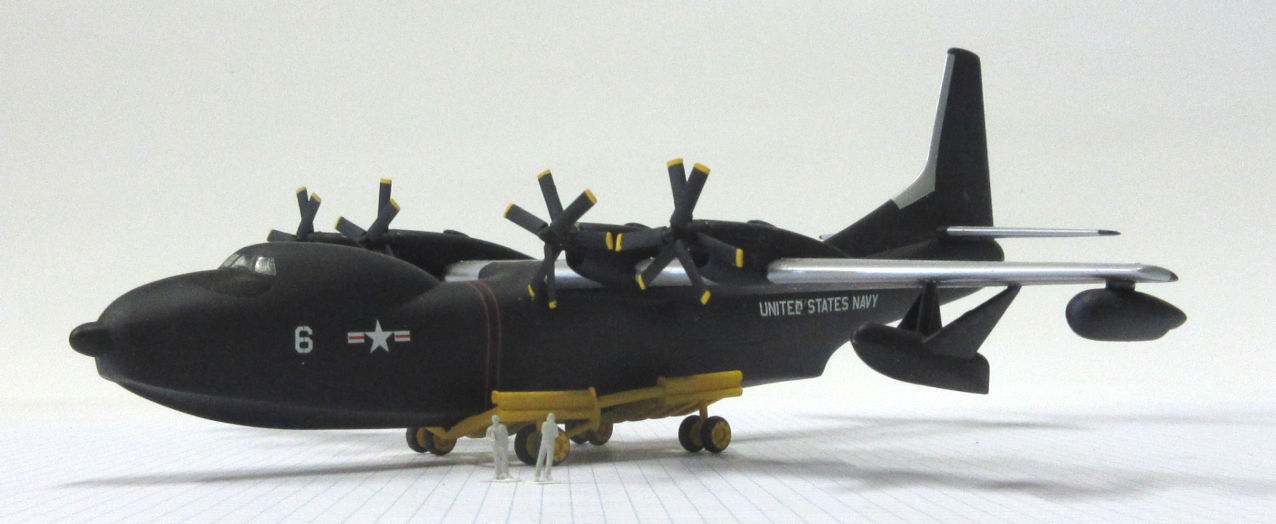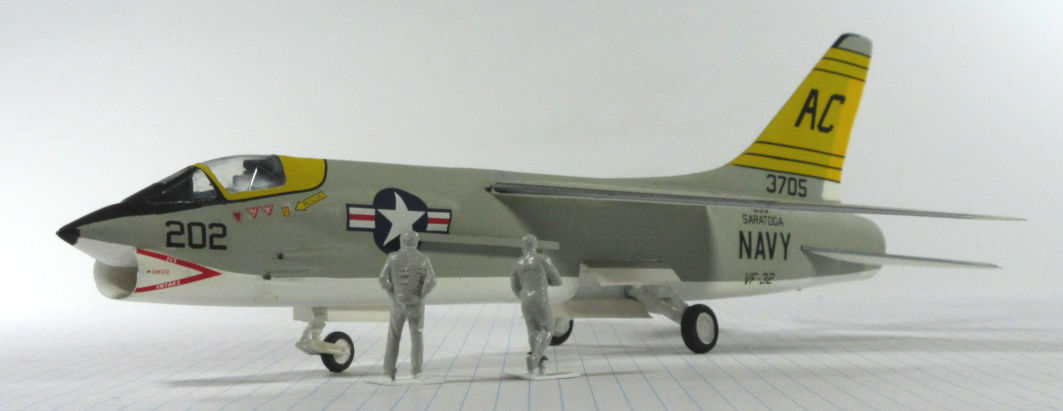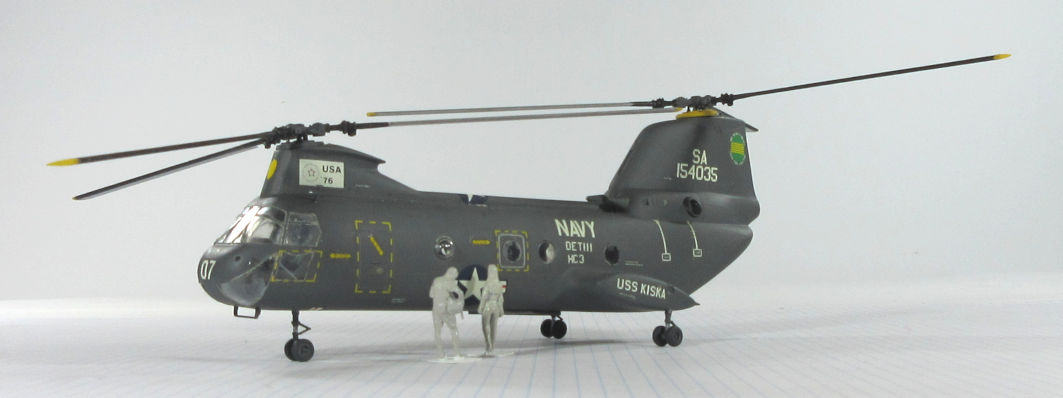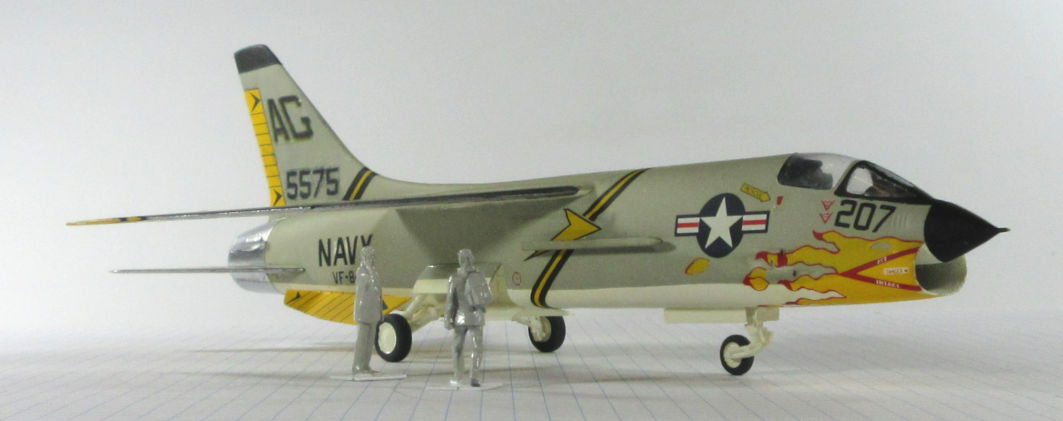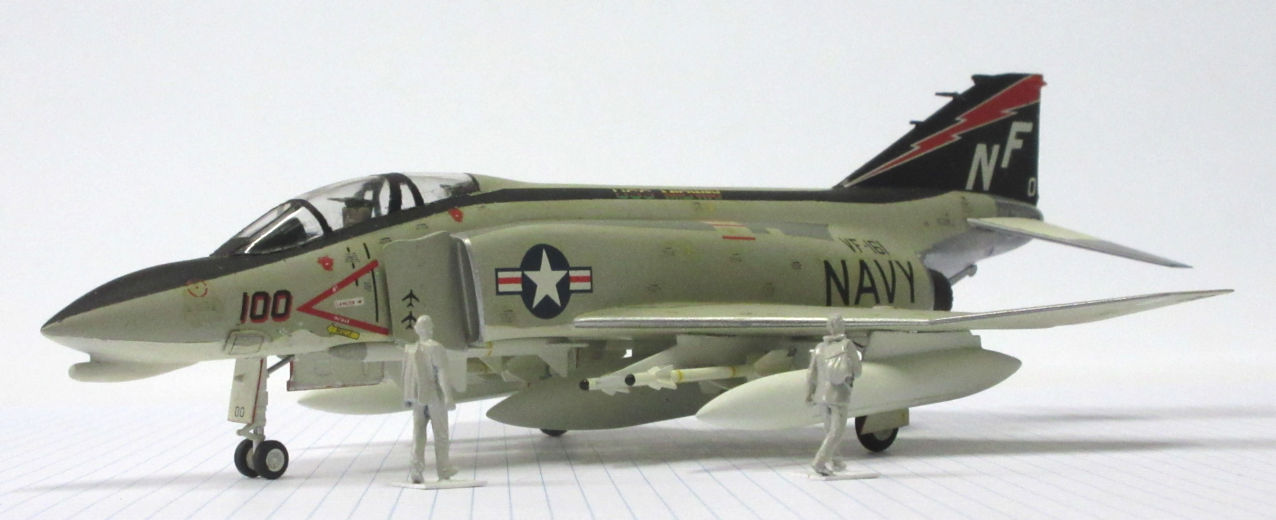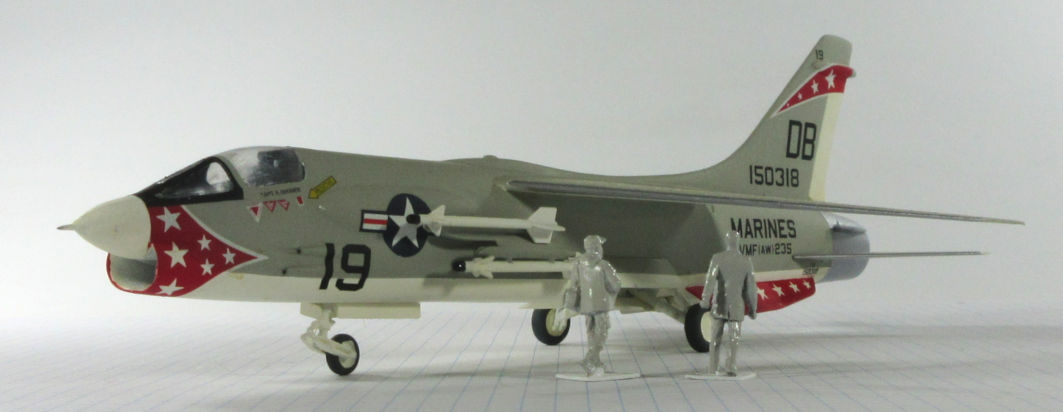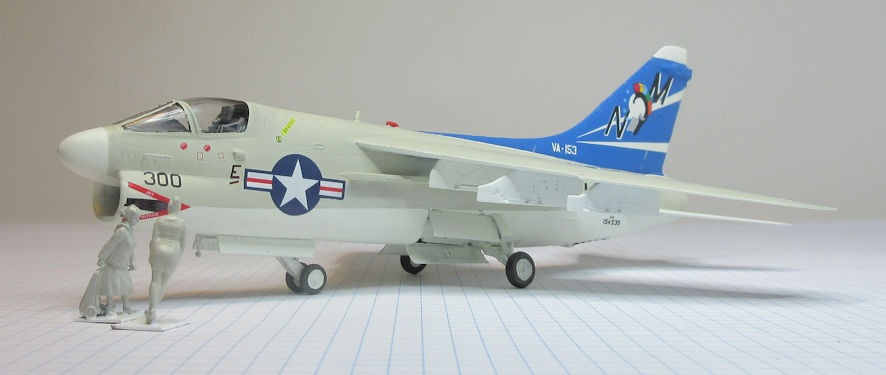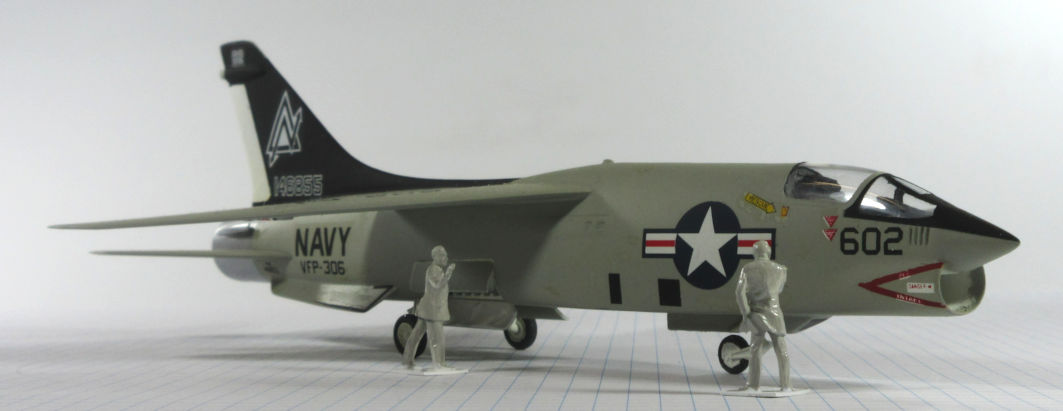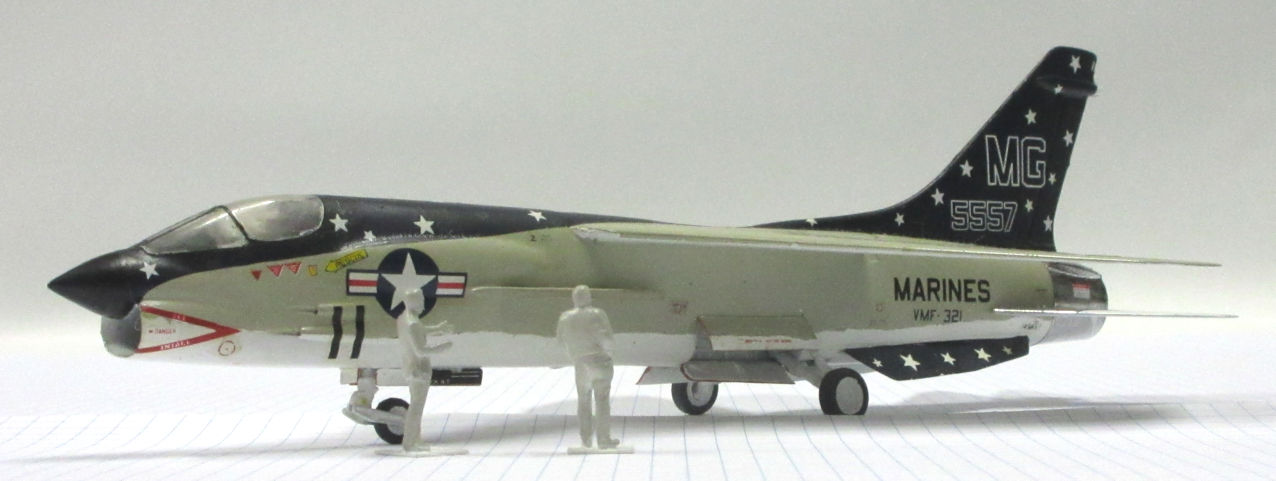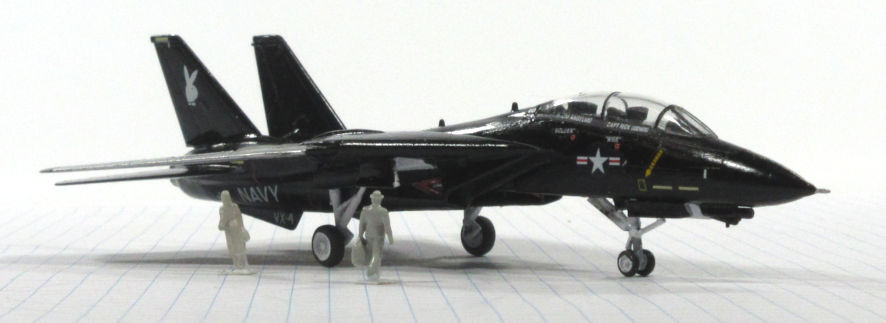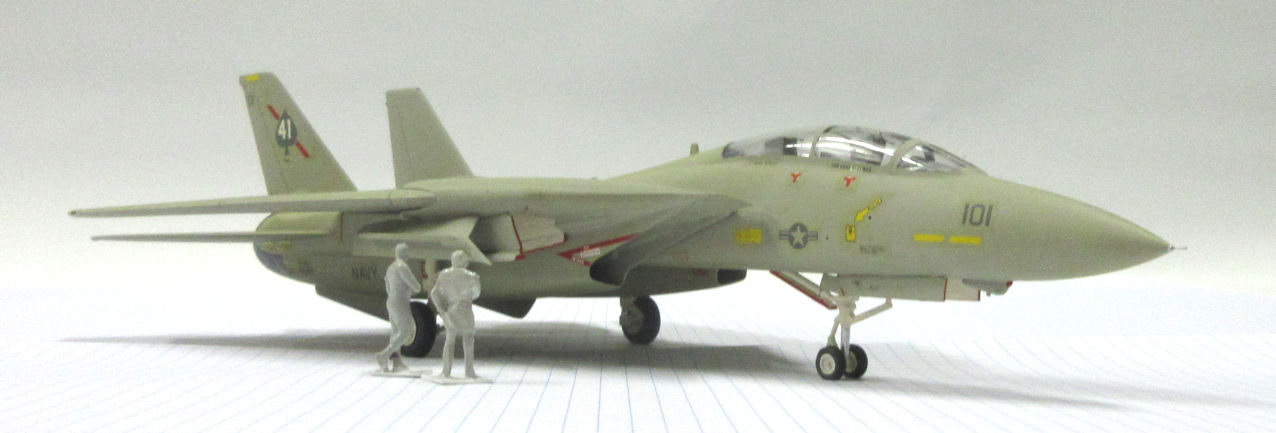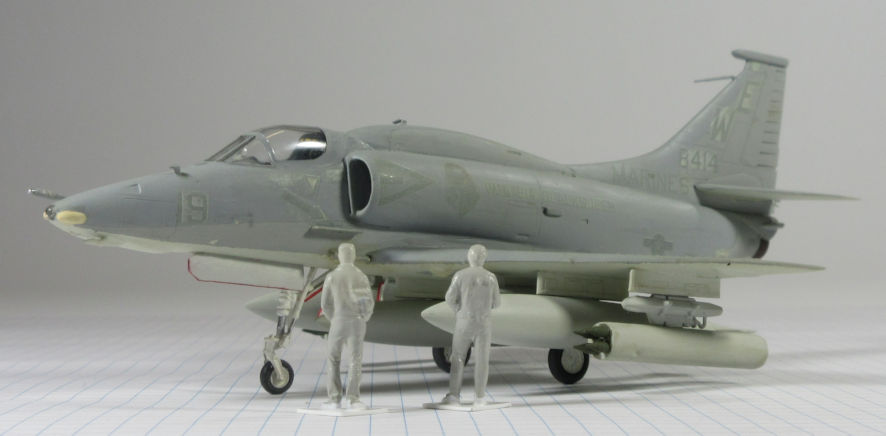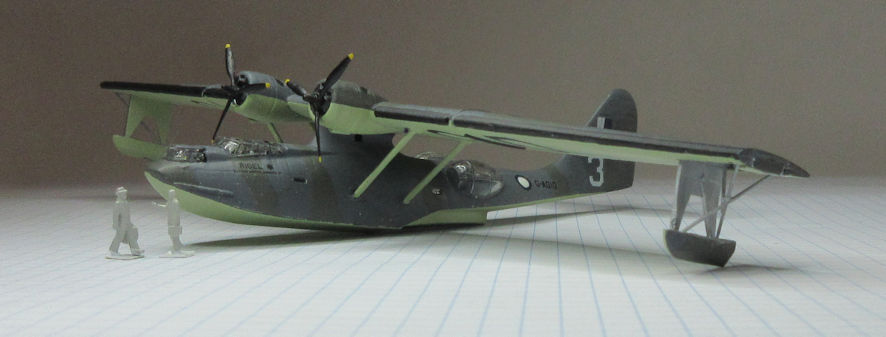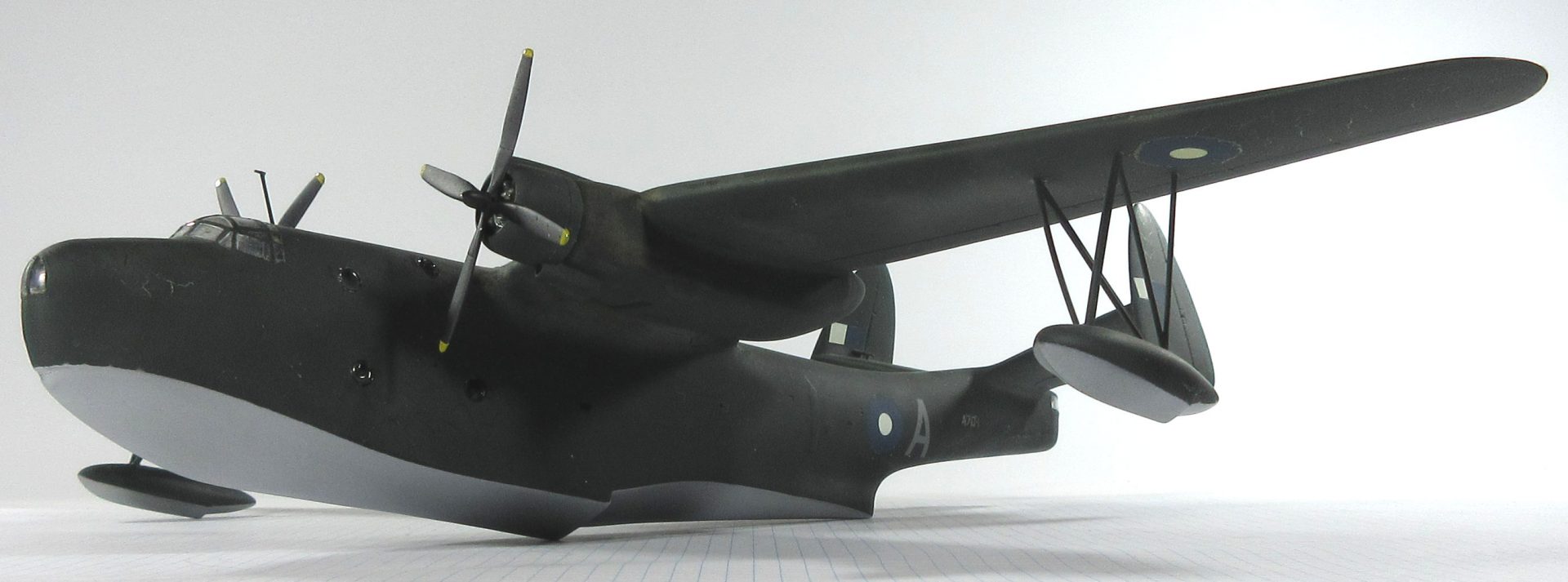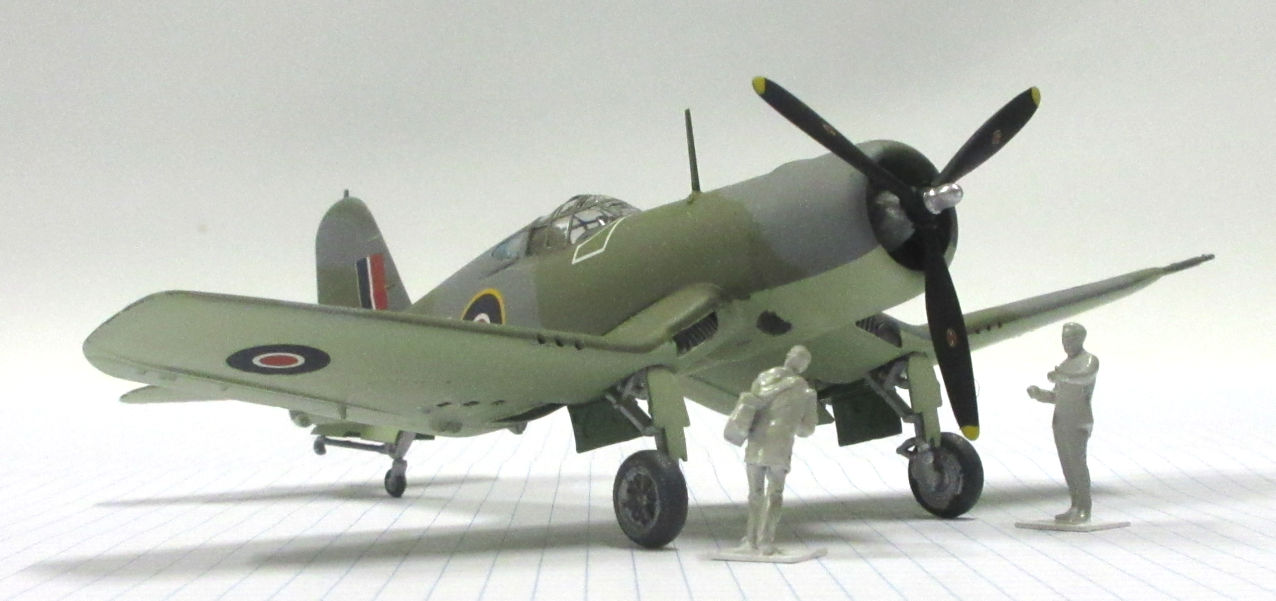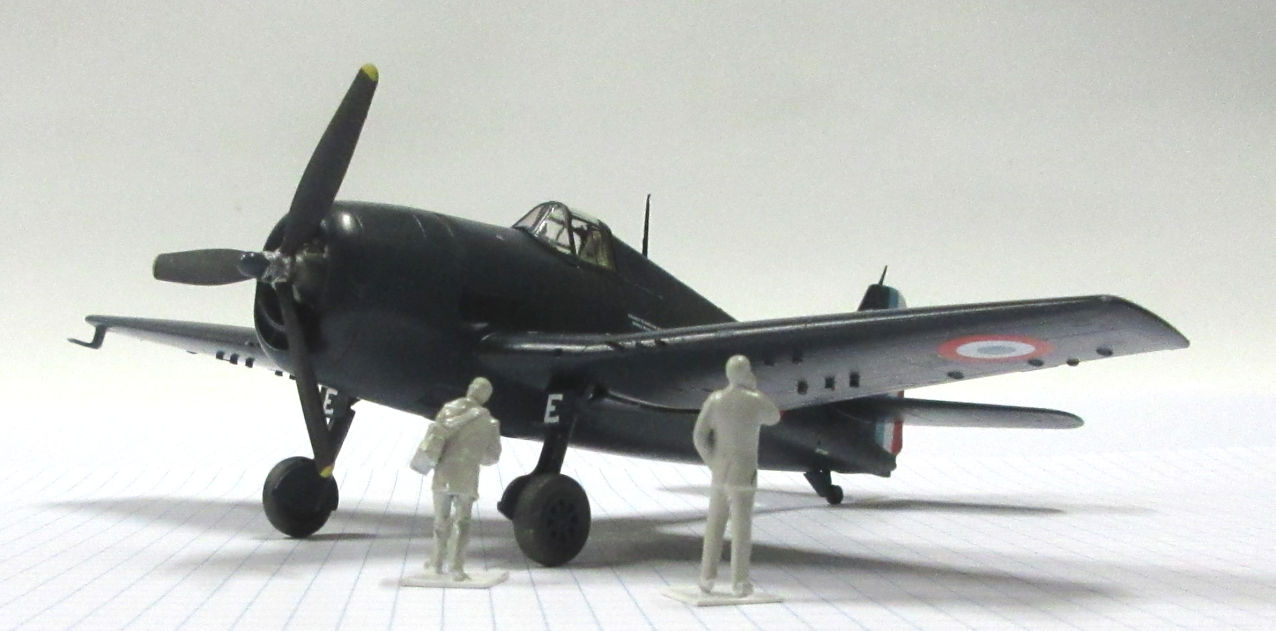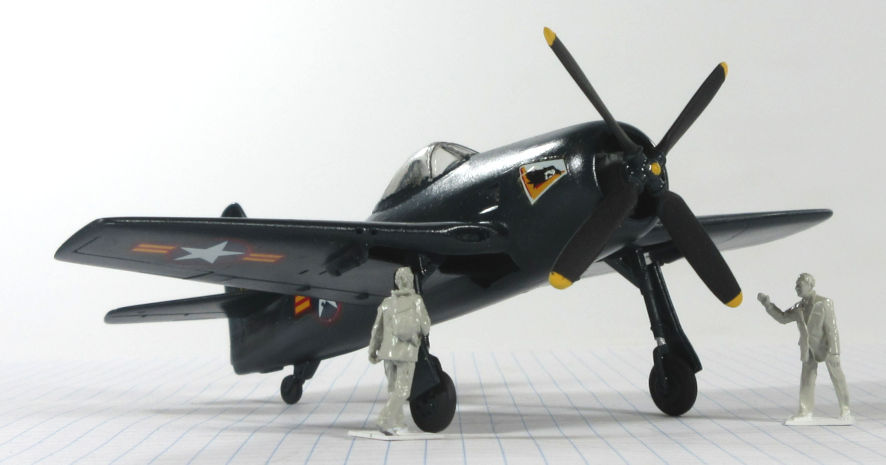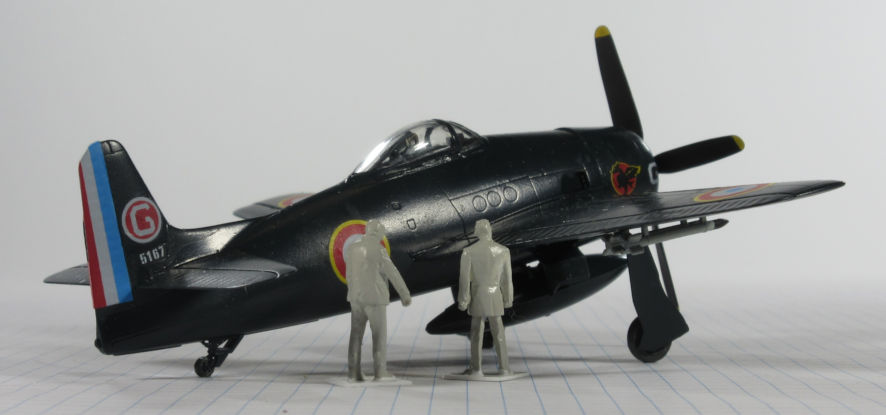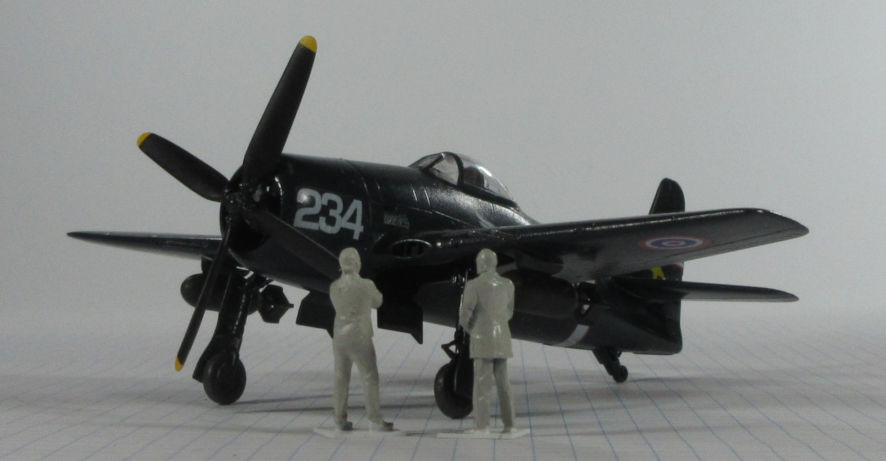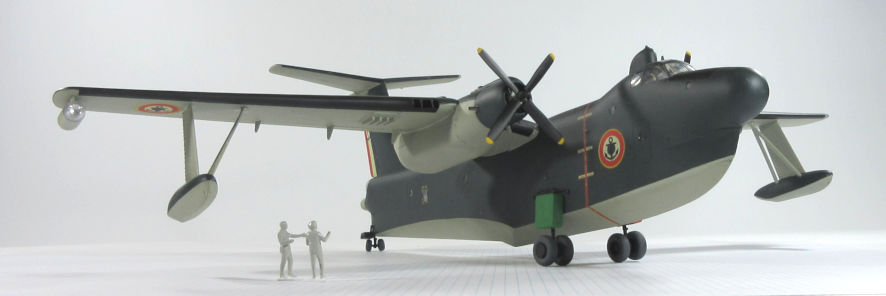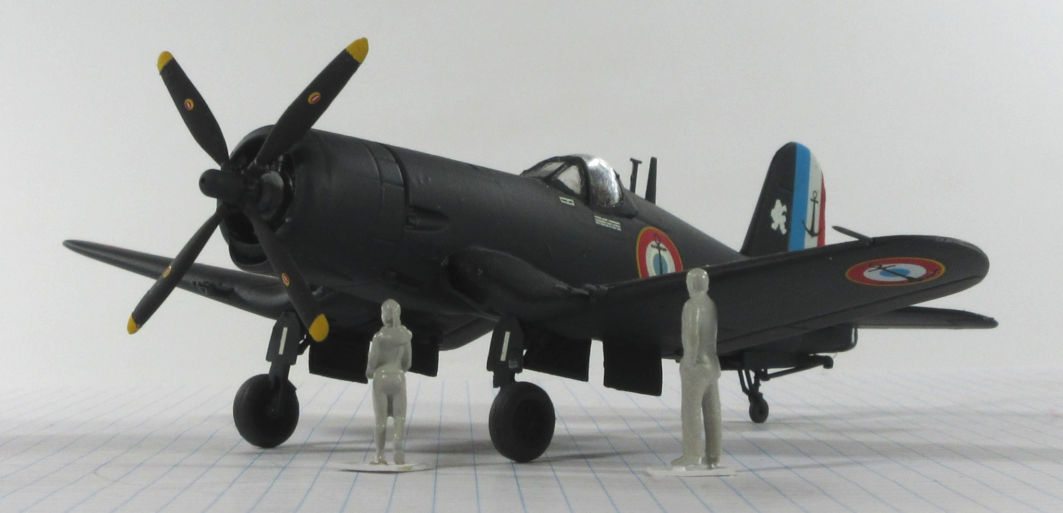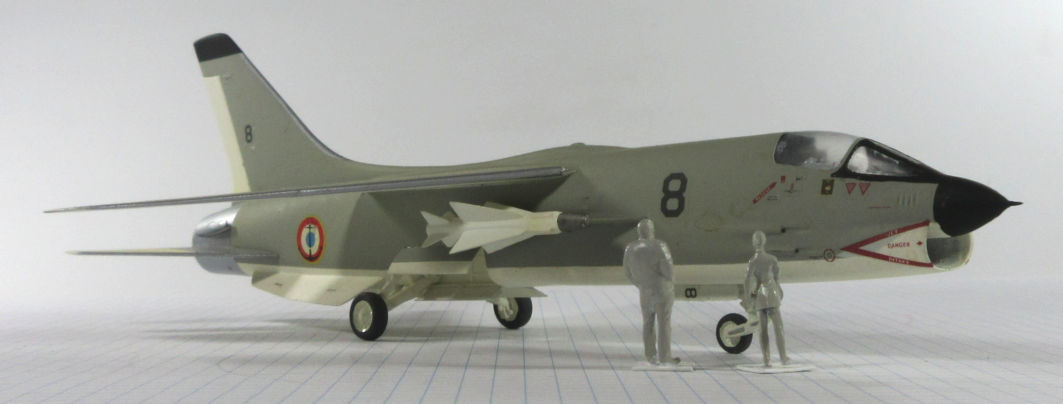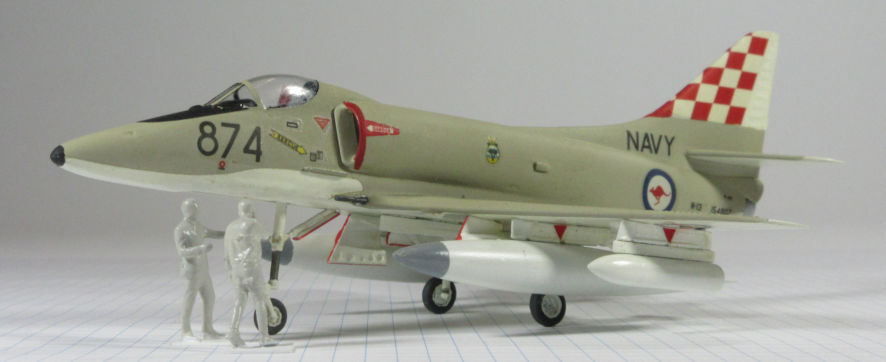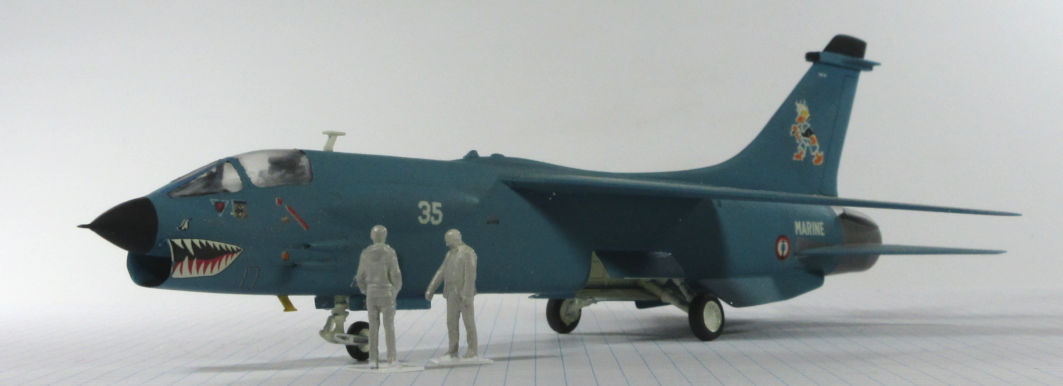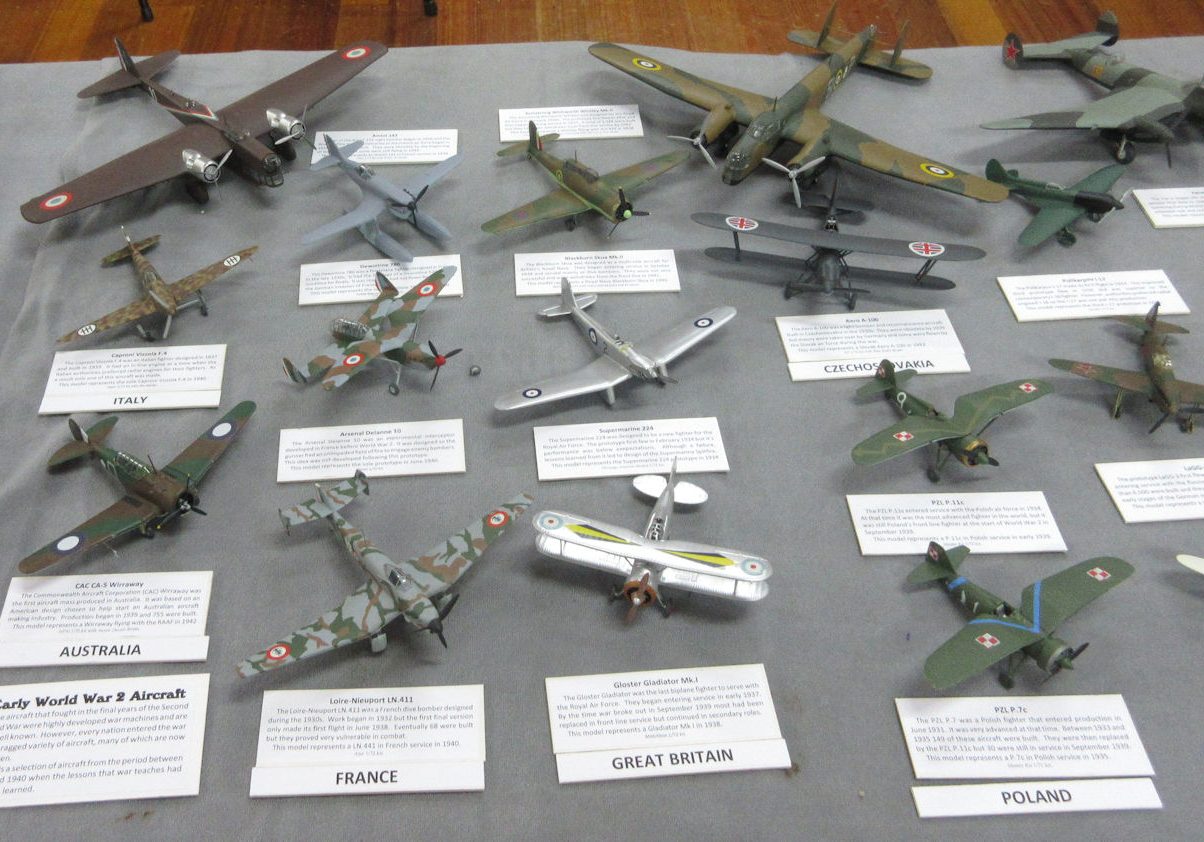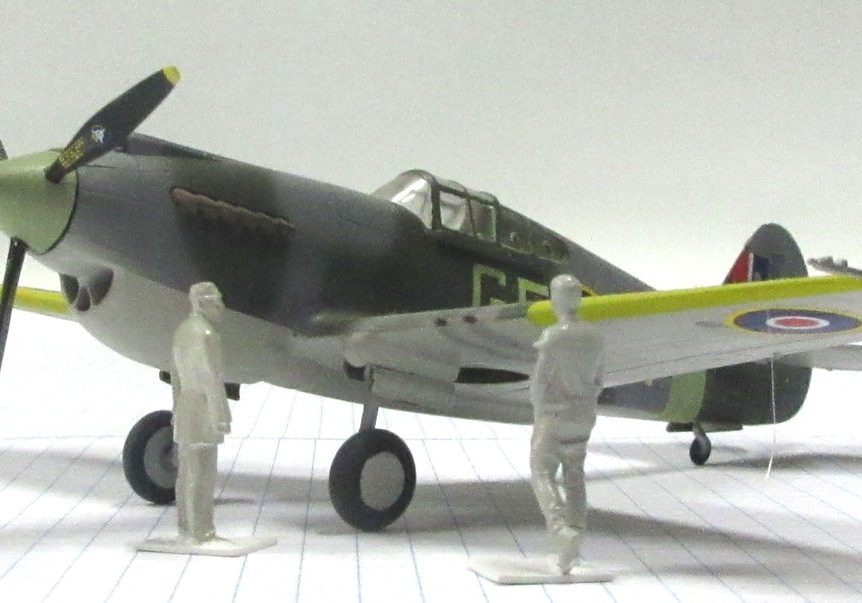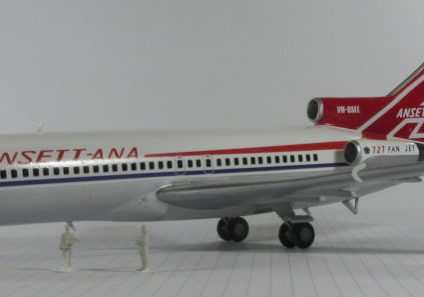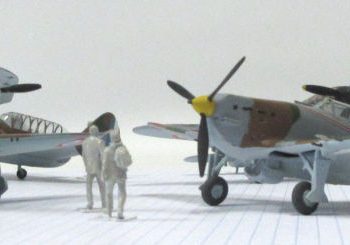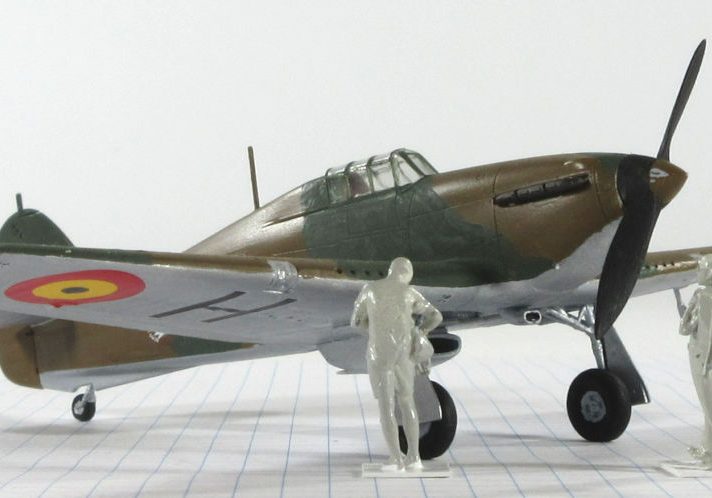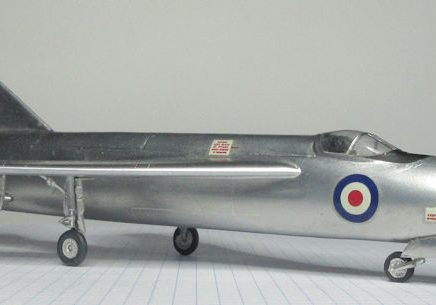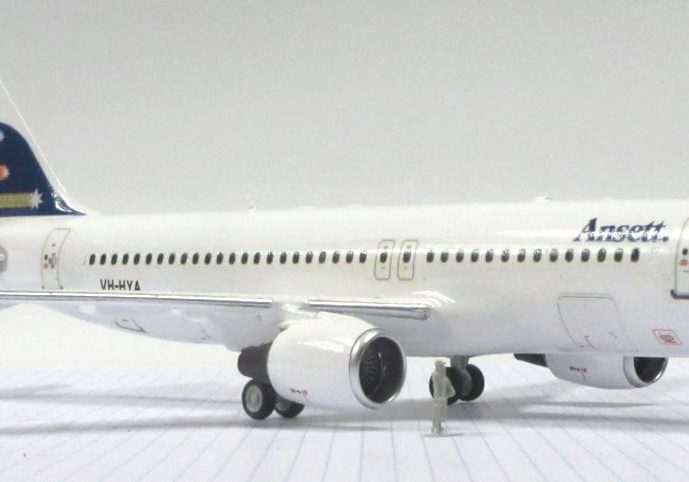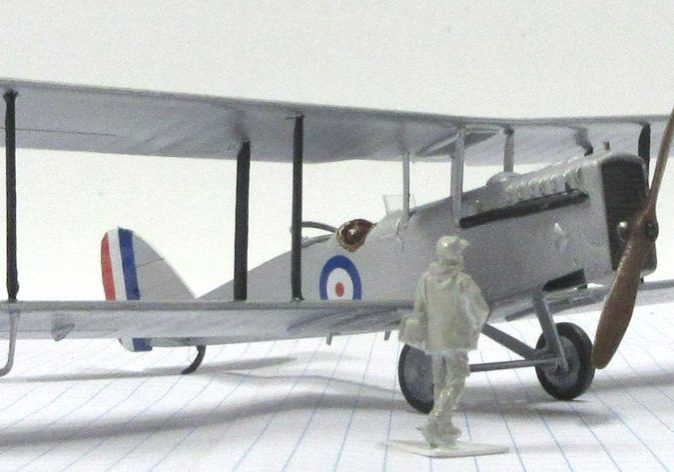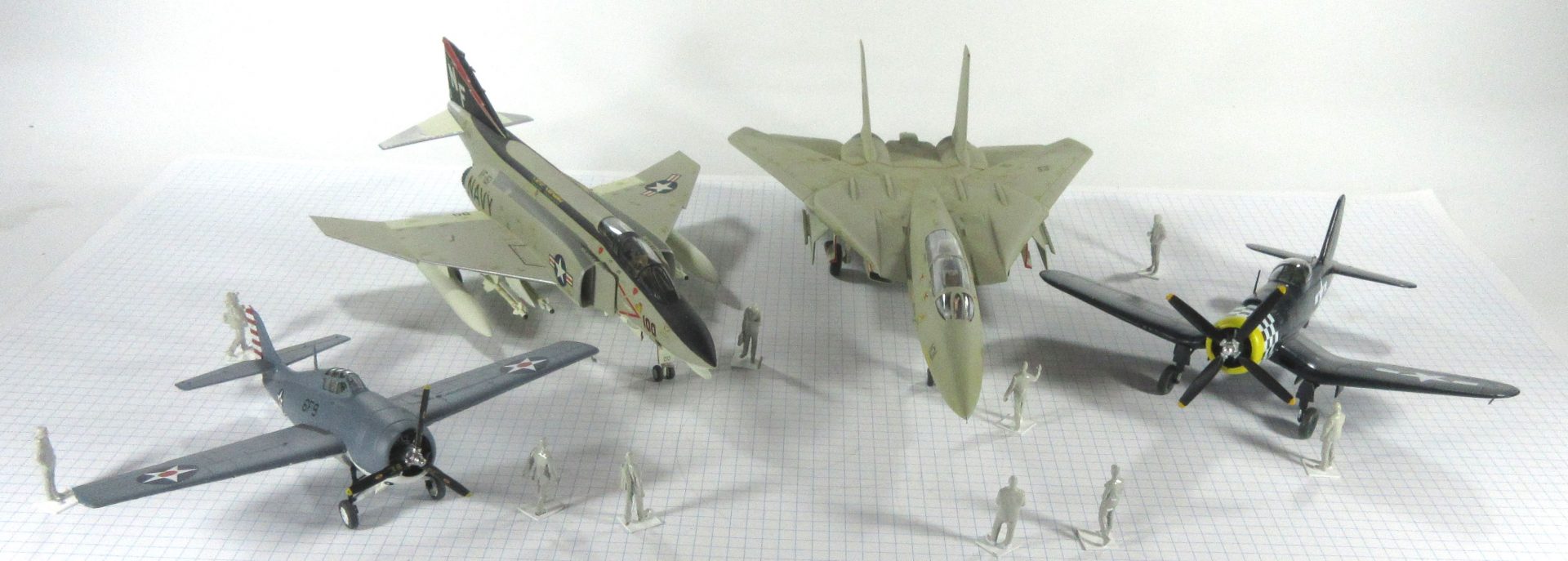
This museum already has models of many aircraft that have flown with the United States Navy, and there are more to come. The history of the US Navy is long and complex but here we simply show some of the aircraft that have been part of that history. We will be adding more as they become available. (The years are generally the year in which the first flight was made.)
Grumman XF5F – 1940
The Grumman XF5F was an experimental fighter developed in the late 1930s to bring a new level of performance to carrier borne fighters. Although only one was manufactured it contributed to the development of later fighters.
Grumman F4F-4 – 1942
The Grumman F4F Wildcat was the United States’ front line naval fighter in the first years of the Pacific War. They also flew with Britain’s Fleet Air Arm. As World War 2 progressed they were used in many auxiliary roles.
Vought F4U-1D – 1943
Curtiss SB2C-4 – 1944
The Curtiss SB2C was the last of the Curtiss ‘Helldiver’ dive bomber line and served with great success in the Pacific during World War II. More then 7,000 were made and they went on to serve with many air forces after the war.
Consolidated TBY-2 – 1944
The Consolitated TBY-2 began life as a Vought designed torpedo bomber in competition with the Grumman TBF Avenger. It was ordered as insurance against the TBF’s failure but since that aircraft performed well the TBY saw little action.
Boeing XF8F – 1944
The Boeing XF8F was designed to give the US Navy a very long range fighter bomber. It was highly effective but did not enter production because official interest had turned to jet aircraft by the time it flew.
Grumman F7F-3 – 1944
The Grumman F7F Tigercat was one of the most powerful piston engined fighters ever produced. Although it’s development began before the US joined WWII in 1941 very few were in operation before the end of the war in 1945
Grumman F8F-2 – 1944
The Grumman F8F was one of the most potent piston engined fighters developed during World War II. It was too late to fly in combat during the war and was quickly replaced by the new jet powered fighters.
This model represents a F8F-2 flying with VF-83 from the USS Franklin D Roosevelt in March 1949.
Ryan FR-1 – 1944
The Ryan FR-1 was a mixed power fighter developed during World War Two to give the US Navy a jet powered fighter that also had a trusted piston engine. Only a few were made and did not see service during the war.
General Motors FM-2 – 1944
The General Motors FM-2 was a licence built version of the Grumman F4F US Navy fighter. It was used on small escort carriers which could not accommodate larger fighters and served to the end of World War II.
This model represent a FM-2 of VC-93 flying from the USS Petrof Bay in 1945.
Goodyear F2G-1
The Goodyear F2G was a development of the Vought F4U Corsair fitted with a much more powerful engine. It’s performance was disappointing and it did not enter production so only ten were manufactured.
McDonnell FH-1 – 1945
The FH-1 was the United States Navy’s first jet fighter. It introduced the Navy to jet propulsion and was the first jet aircraft to fly onto and from an aircraft carrier. However, they were quickly replaced by better aeroplanes.
Boeing PB-1W – 1945
The Boeing PB-1W was a conversion of the B-17 bomber. It was designed to provide US Navy fleets with airborne early warning against Japanese kamikaze attacks but did not enter service until after the end of the war.

Vought XF5U-1 – 1946
The Vought XF5U was a revolutionary aeroplane design developed during World War II that had the potential to bring new levels of performance to piston engined fighters. It was, however, overtaken by the arrival of jet engines.
North American FJ-1 – 1946
The North American FJ-1 Fury was among the first generation of jet fighters designed and constructed for service with the United States Navy. They were manufactured in small numbers but were the first operational naval jet fighters.
Vought F6U-1 – 1946
The Vought F6U Pirate was one of the first generation of jet fighters and one of the first jet aeroplanes operated by the US Navy. Despite its innovation it was not very successful and only several dozen were made.
Martin P4M-1 – 1946
The Martin P4M was a long range patrol bomber designed for the US Navy. Although it did not enter mass production it was converted for electronic surveillance missions and flew many secret missions for the US government.
Ryan XF2R-1 – 1946
The Ryan XF2R-1 Dark Shark was an attempt to overcome the limitations of early turbojet engines by the addition of a turboprop engine. Although the result was relatively successful the concept was superceded by early pure jet fighters.
McDonnell F2H-2 – 1947
The McDonnell F2H-2 was a fighter bomber developed in the United States in the second half of the 1940s. They served with the United States Navy and Marine Corps and took an active part in the Korean War.
This model represents a F2H-2 of VF-172 flying from the USS Essex off the coast of Korea in October 1951.
Douglas D.558-2 – 1948
The Douglas D.558-2 was the second phase of a research project begun in the mid 1940s to examine the characteristics of transonic and supersonic flight. Three D.558-2s were made and one was the first aeroplane to exceed Mach 2.
North American AJ-2 – 1948
The North American AJ Savage was a a heavy bomber flown by the United States Navy. They were capable of carrying atomic bombs to give the US a nuclear deterrence from the early 1950s. A total of 140 were built.
Vought F7U-1 – 1948
The Vought F7U Cutlass was designed immediately after World War II for the US Navy. It included many innovative features in its radical design but proved to be difficult to fly and service and was unsuitable for carrier operations.
Grumman F9F-2 – 1948
The Grumman F9F series of single jet fighters was Grumman’s first production jet aircraft and proved to be solid and reliable. The F9F Panthers served with the US Navy and Marine Corps during the Korean War. This model represents a Grumman F9F-2 flying with VMF-311 in Korea in June 1951.
North American T-28B – 1949
The North American T-28 Trojan was designed to replace the world famous T-6 Harvard trainer. It entered service in the early 1950s and eventually also served as a close support ground attack and reconnaissance aeroplane.
Grumman F9F-4
The Grumman F9F series of single jet fighters was Grumman’s first production jet aircraft and proved to be solid and reliable. The F9F Panthers served with the United States Navy during the Korean War. This model represents 125939 of VMF-314 in about.1953.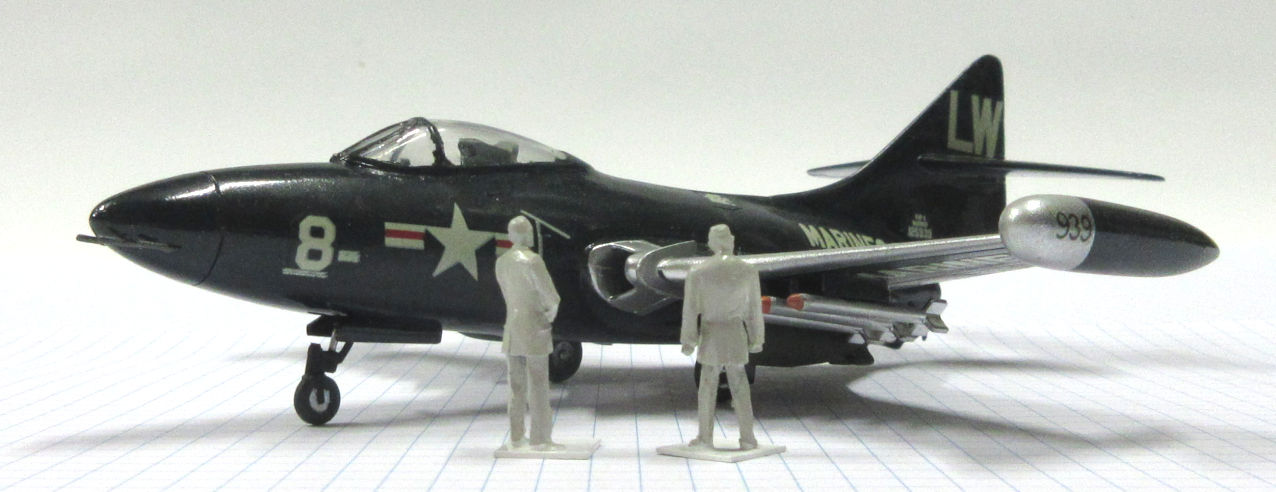
Convair XP5Y-1
The Convair XP5Y was a long range patrol flying boat designed in the United States in the late 1940s. Due to engine problems and changing priorities only the prototype flew but the design was reworked as the R3Y transport aircraft.
Douglas A2D-1
The Douglas A2D was an early turboprop attack fighter developed for the US Navy. It’s development was delayed by engine problems and it did not enter production because it was overtaken by more modern jet aircraft. This model represents the first production aircraft in about 1952.
Douglas F3D-2 – 1951
The Douglas F3D Skyknight was designed specially as a radar equipped night fighter for the US Navy. Though not as exciting as faster contemporary day fighters, it served usefully for many years because of its size and stability.
rumman F9F-8 – 1951
The Grumman F9F-8 Cougar was a development of the earlier Grumman F9F Panther straight wing fighter. It’s new wing gave it an improved performance. Introduced to service in 1953, they remained in use until 1974.
Douglas F4D-1 – 1951
The Douglas F4D-1 Skyray was designed in the late 1940s using aeronautical information captured from Germany at the end of the war. It captured several world records and became a very effective interceptor.
Convair XFY-1 – 1951
The Convair XFY-1 was designed and constructed to give the US Navy a fighter capable of flying from small areas on ships. The concept proved to be unworkable and development of this kind of fighter was abandoned.
Grumman XF10F-1 – 1952
The Grumman XF10F was the US Navy’s first variable geometry wing fighter. It was a very troublesome aeroplane with many faults so the project was cancelled and only one prototype flew.
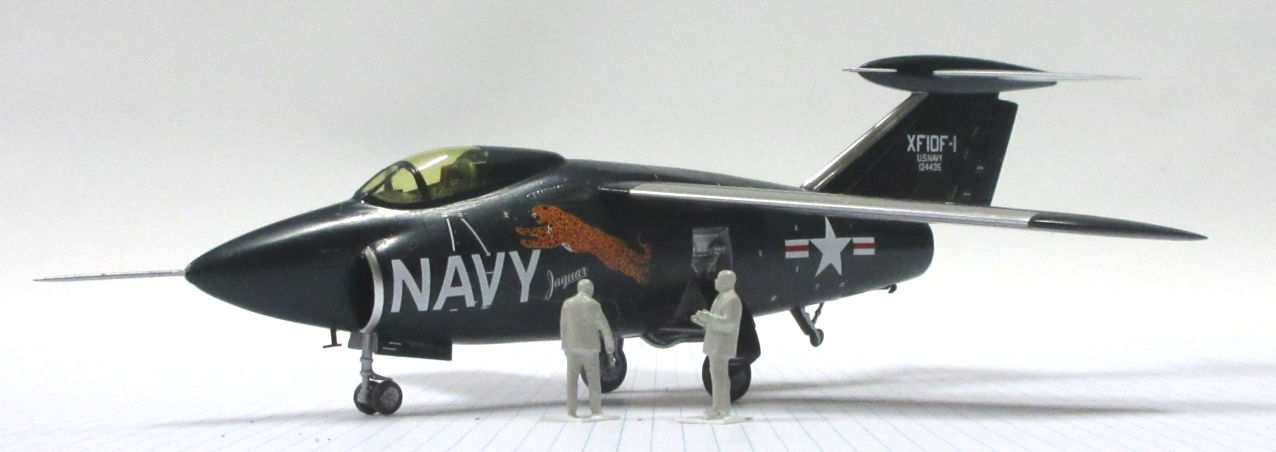
Convair YF2Y-1 – 1953
The Convair YF2Y-1 Sea Dart was designed as a supersonic seaplane fighter capable of operating from a wide variety of water bases around the world. By the mid 1950s the concept was abandoned and only three Sea Darts flew.
Grumman F11F-1 – 1954
The Grumman F11F was the first supersonic fighter to fly operationally with the US Navy. It was in front line service for only four years but became popular as the mount of the US Navy’s Blue Angles aerobatic team for a decade.
Douglas A4D-1 – 1954
The Douglas A4D (later redesignated the A-4) Skyhawk was a light attack fighter developed for the US Navy in the 1950s. It was very popular, served with a number of air forces and eventually 2,960 were manufactured.
McDonnell F3H-2 – 1954
The McDonnell F3H-2 Demon was a generally disappointing fighter. Design began in 1949 but problems with its engine meant it could not exceed the speed of sound. Even so, it served as a fleet interceptor from 1956 to 1964.
This model represents the F3H-2 of VF-41 which won the Top Gun Award in December 1959.
Sikorsky UH-34D
The Sikorsky H-34 was a piston engined helicopter developed in the United States in the 1950s. Originally produced as an anti-submarine helicopter for the US Navy it was modified into many other roles and served with many civil and military users around the world.
Convair R3Y-2
The Convair R3Y Tradewind was a heavy cargo carrying flying boat developed in the 1950s. Despite its innovative design the poor reliability of its engines meant it was not a success and only eleven were constructed.
Martin P6M-2 – 1955
The Martin P6M Sea Master was a high speed strategic bomber developed in the 1950s for the US Navy. It’s role was to deliver nuclear weapons but it was superceded by the Navy’s nuclear missile armed submarines in 1959.
North American FJ-4B -1956
The North American FJ-4B Fury was the last of a line of fighters based on the F-86 Sabre but converted for naval use. They proved very useful and served with the US Navy between 1956 and early 1962.
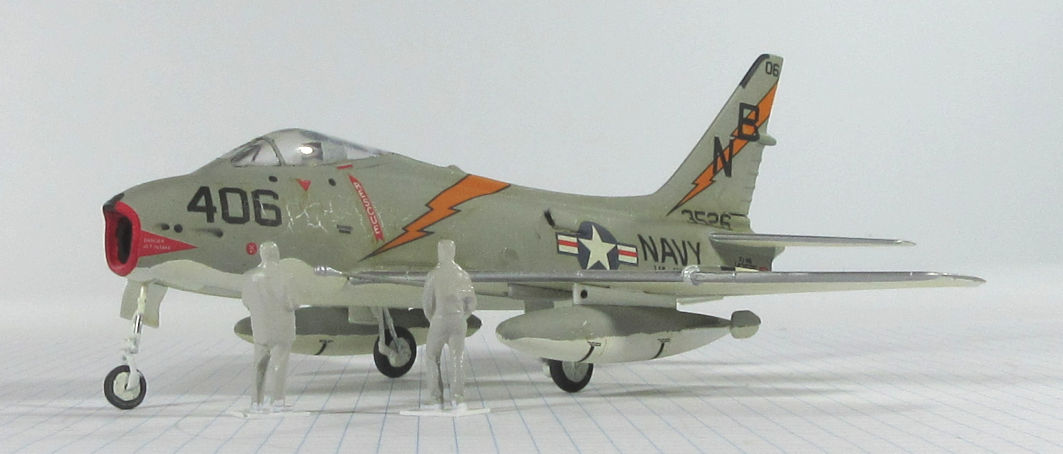
Vought F8U-1 (F-8A) – 1957
The Vought F8U (known as the F-8 from 1962) was a supersonic air superiority fighter developed in the 1950s. A total of 1261 were produced, entering US Navy service in 1957 and remaining in service for twenty years.
Boeing Vertol CH-46D – 1958
The Boeing Vertol CH-46D was initially designed as a commercial transport helicopter. However it was adapted as a military transport and has flown for several countries including the US, Japan, Sweden and Canada.
Vought F8U-2 (F-8C) – 1958
The Vought F8U-2 (F-8C) was a supersonic air superiority fighter developed in the 1950s. A total of 1261 were produced, they began entering service with the US Navy in 1957 and remained in service there until 1987.
Vought XF8U-3 – 1958
The Vought F8U-3 was designed by the same company that produced the F-8 using similar design concepts but making use of a more powerful engine. Despite its potential it was not accepted for production and only five were built.
This model represents the F8U-3 first prototype circa 1959.
McDonnell F-4B Phantom II – 1960
The F-4 Phantom II was the most successful jet fighter produced in the West from the 1960s. It entered service with the US Navy in 1960 and later flew with many other air forces. Over 5000 were constructed. This model represents an F-4B of VF-161 on the USS Midways during the Vietnam War.
Vought F-8E – 1962
The Vought F-8 was a supersonic air superiority fighter developed in the 1950s. A total of 1261 were produced, they began entering service with the US Navy in 1957 and remained in service there until 1987.
North American RA-5C
The North American A-5 began life as a high speed attack bomber capable of delivering an atomic bomb from United States aircraft carriers. After a change in policy they were converted to unarmed reconnaissance aircraft.
Vought A-7A – 1965
The Vought A-7 was a single seat attack fighter designed for the US Navy in the 1960s. They were very popular and flew with other services including the US Air Force and the Greek and Portugese air forces.
Vought RF-8G – 1965
The Vought RF-8G was a photographic reconnaissance version of the F-8 fighter. They were rebuilt from RF-8A aeroplanes with improved performance and were the last version of the F-8 to fly with the US Navy.
Vought F-8K – 1968
The Vought F-8 Crusader was a supersonic air superiority fighter developed for the US Navy in the 1950s. They began entering service with the US Navy in 1957 and proved popular and successful with 1115 being produced.
This model represents a F-8K flying with VMF-321 in April 1973.
Grumman F-14A – 1970
The Grumman F-14 Tomcat was regarded by many as the finest warplanes ever made. It was the last of a long line of Grumman fighters designed for the United States Navy and flew in service from 1972 until in mid 2006.
This model represents a F-14A flying with VX-4 of the US Navy in 1988.
This model represents a F-14A of VF-41 following the ‘Gulf of Sidra’ incident on 19 August 1981 when two F-14s shot down two Lybian Su-22s.
Douglas A-4M – 1971
The Douglas A-4 was one of the most successful post-war aircraft to fly with the US Navy. This high performance attack aircraft also served with many overseas air forces including the RAN and the RNZAF
Lockheed EP-3E – 1991
The Lockheed EP-3E was a modified version of the P-3 Orion anti-submarine aircraft. As a highly sophisticated electronic intelligence aircraft it has served the US Navy from the early 1970s to the present.

US NAVY AIRCRAFT
IN THE SERVICE OF OTHER NATIONS
Consolidated PBY-5 – 1936
The Consolidated PBY Catalina was one of the most widely used flying boats of World War II. Over three thousand were constructed and they served in almost every theater of the war with many allied air services.
Martin PBM – 1939
The Martin PBM Mariner was a long range flying boat that saw successful service during and after World War II. In 1943 twelve of the cargo version were delivered to the Royal Australian Air Force.
Curtiss Wright SNC-1 – 1940
The Curtiss Wright SNC-1 Falcon was a naval version of the Curtiss Wright CW-22. They served as training and observation aircraft with the US Navy and later with several air forces in Latin America.
Lockheed PV-1 – 1941
The Lockheed PV-1 Ventura was a patrol bomber used in a variety of maritime roles by many Allied air forces during World War II. The Royal Australian Air Force flew them in operations against the Japanese from 1944.
Vought Corsair I (F4U-1) – 1943
Grumman F6F-5 – 1946
This model represent a F6F-5 flying with the French Aeronavale in Indochina in 1951.
Grummasn F8F-1 – 1944
The Grumman F8F was one of the most potent of the last generation of piston engined fighters. It was too late to see US service during World War II but flew with the French, Thai and South Vietnamese air forces in South East Asia.
Grumman F8F-1B – 1946
The Grumman F8F was one of the most potent of the last generation of piston engined fighters. It was too late to see US service during World War II but flew with the French, Thai and South Vietnamese air forces in South East Asia.
Martin P5M-2 – 1952
The Martin P5M Marlin entered service in the early 1950s as a long range patrol flying boat specialising in anti-submarine work. They remained in service until the late 1960s and were the last flying boats in US service.
Vought F4U-7 – 1952
The Vought F4U Corsair was one of the most important fighters of World War II. The F4U-7 was the final version, constructed in the early 1950s for the French Navy, where they served until September 1964.
Vought F-8E(FN) – 1964
The Vought F-8 was a supersonic air superiority fighter developed in the 1950s. A total of 1261 were produced, they began entering service with the French Aeronavale in 1964 and remained in service there until 2000.
Douglas A-4G – 1965
The light-weight Douglas A-4 was one of the most important ship-borne attack aeroplanes of the second half of the 20th Century. Twenty served with the Royal Australian Navy, flying from the HMAS Melbourne.
Vought F-8P – 1991
The Vought F-8 Crusader was a supersonic air superiority fighter developed in the 1950s. A total of 1261 were produced, they began entering service with the US Navy in 1957 and the last one flew with the French Navy in 2000.


